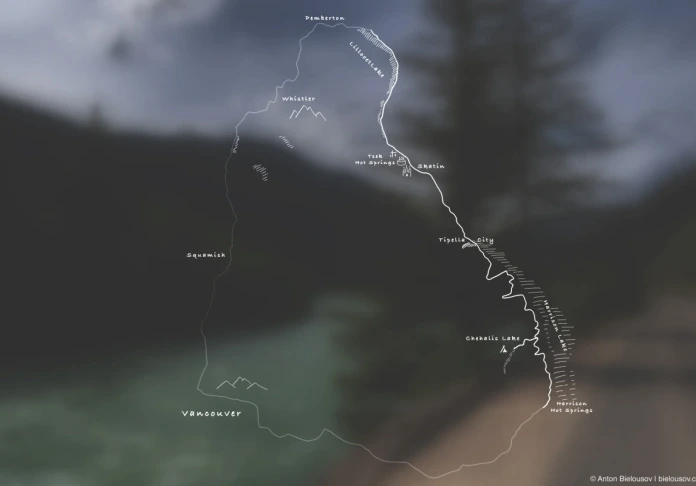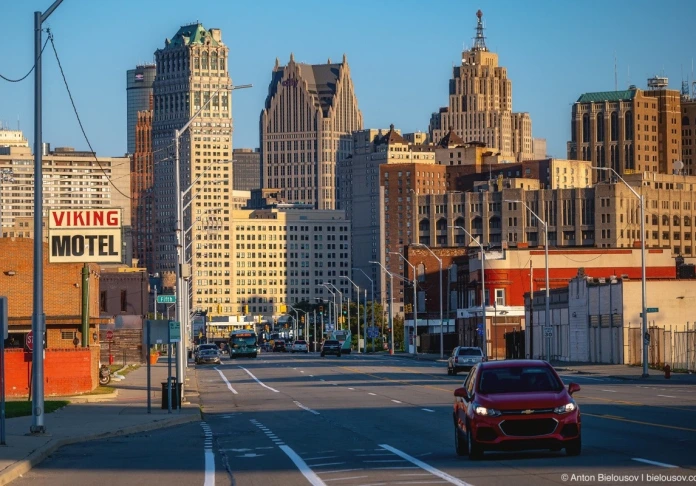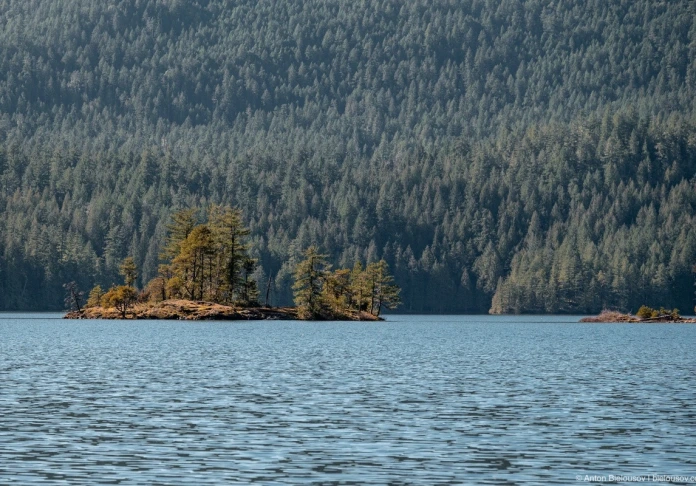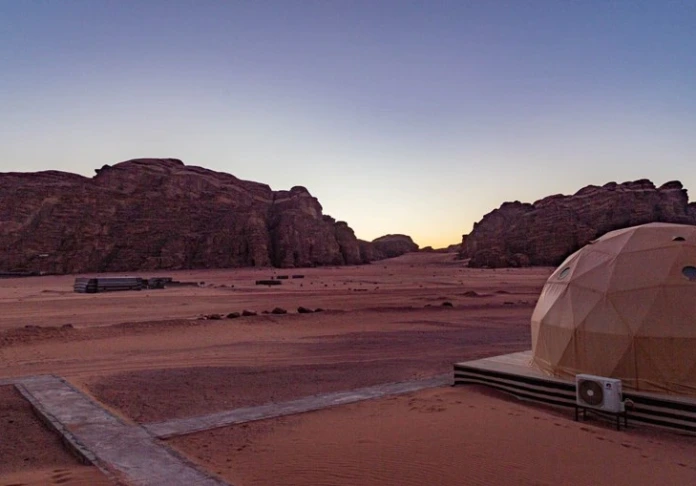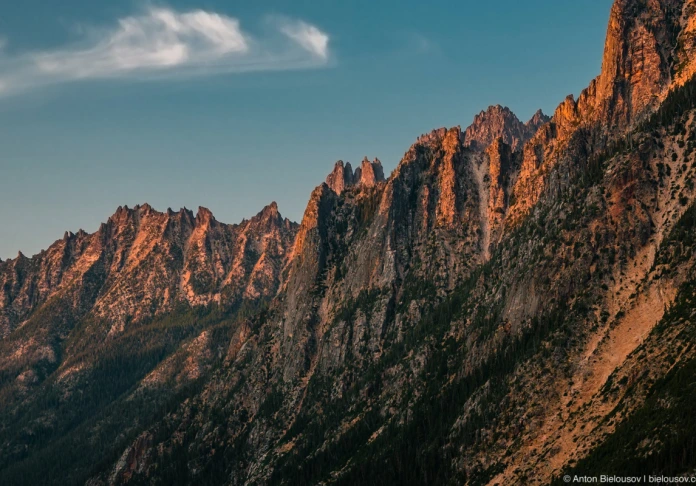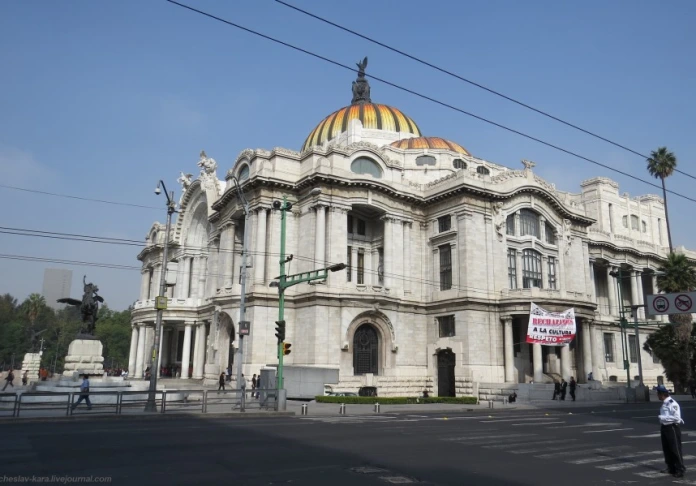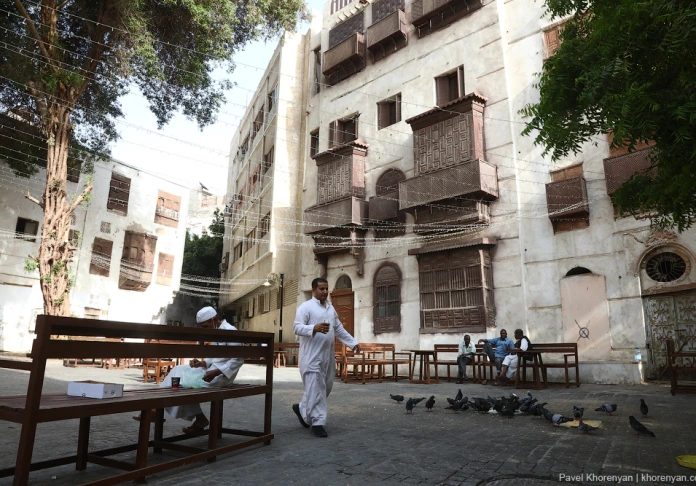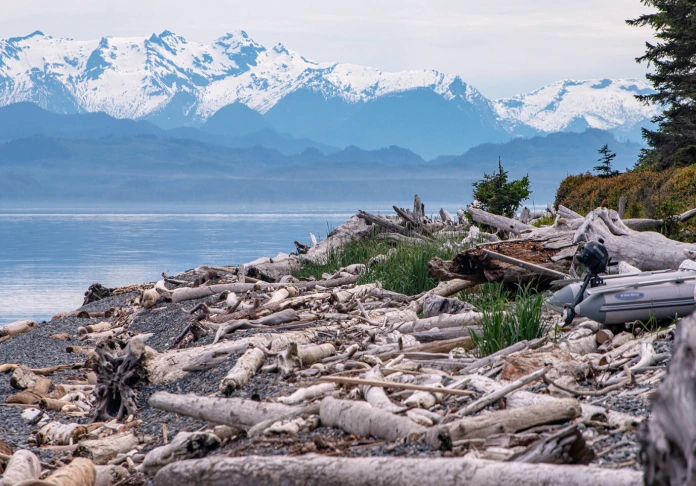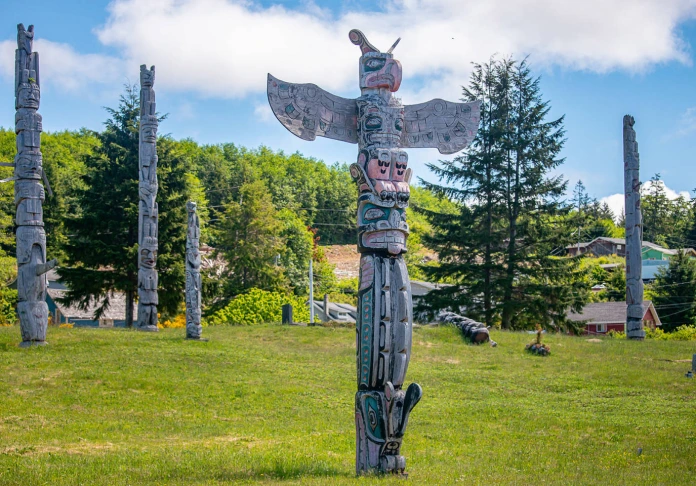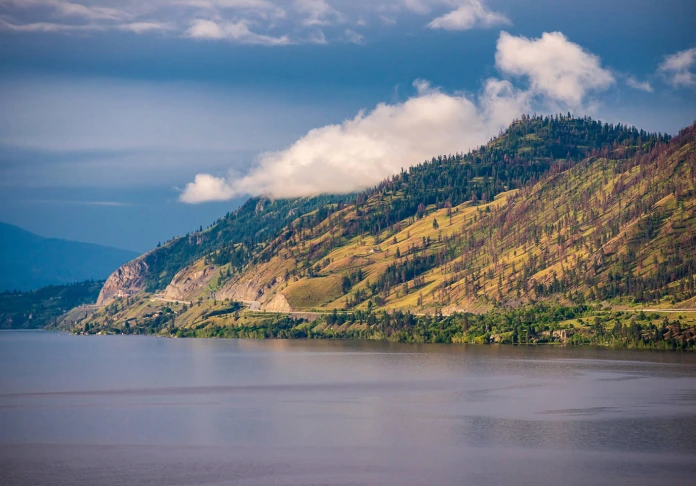North Sumatra. Climb the volcano Sibayak.
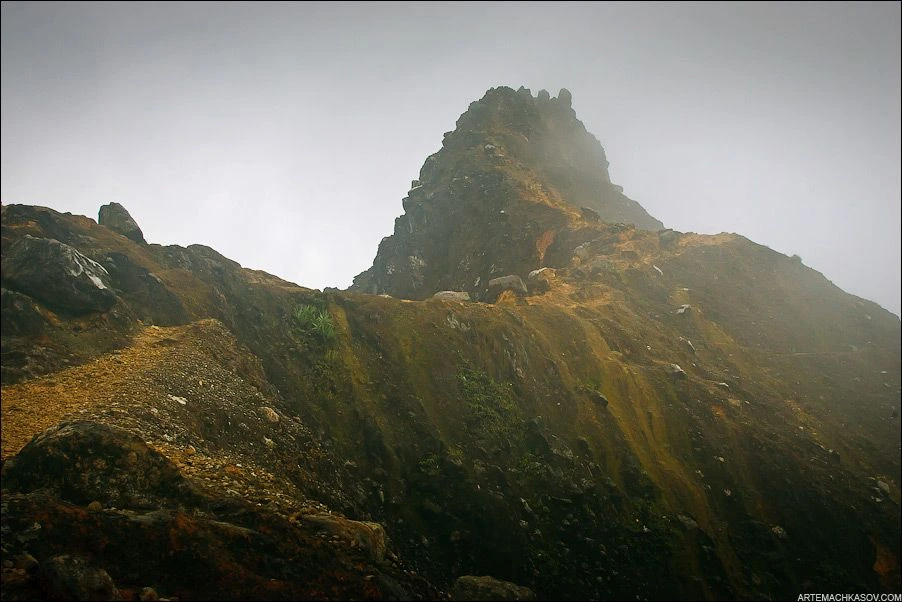
Sibayak volcano (Gunung Sibayak) is located in the north of Sumatra, at 2100 meters overlooking the mountain town of Berastagi (1300 meters above sea level). The last eruption of this volcano is dated 1881 year, and now on the official maps this volcano is designated as "Sibayak Mountain / Mount Sibayak". However, his hot breath still clearly breaks from under layers of ash and lava. The ascent to the volcano starts right from the urban city. Had there eruption, the chances of local residents will be low. On the way to the bottom, we found fertile fields and gardens - Berastagi is widely regarded as "the breadbasket of Sumatra." By the way, the outer unfussy, Berastagi - a very interesting town, which will be discussed in a separate story.
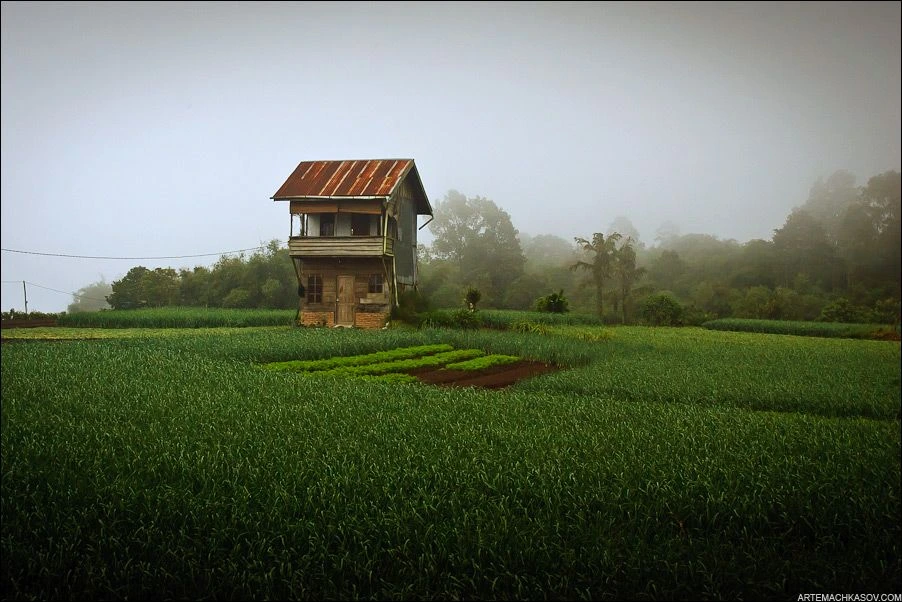
According to its classification, Sibayak - is a stratovolcano (from the Latin. Stratum - layer), or layered volcano - the type of volcano that has a conical shape and folded from a plurality of layers of hardened lava, tephra, and volcanic ash. Stratovolcano is characterized by high, steep shape and periodic explosive eruptions. Spewing lava - viscous and thick, making it freezes before time to spread far.
There is a perception that "breathe" volcano, such as Sibayak, safer sleep completely, because the escaping gases do not accumulate in the bowels of the volcano and the bubble is formed, ejecting lava surface. Therefore, the main danger to Sibayak associated with the risk of getting lost, stumble and get injured - such incidents with tourists happen there regularly. Weighing all, we have decided not to neglect the services of a guide (250,000 rupees, or $ 28 per day trekking for two people).
About this guide should be discussed separately. His name, but rather a nickname - Smiley (Smiley), his 45 years, and more than 20 of them, he works as a guide, practicing throughout the region - from the jungles of Aceh to Berastagi. Smiley holding in cafes and guest-house, and is one of the last Batak - once dominant local folk. His grandmother was a cannibal, like all Batak - and his dreadlocks with him since the first appearance of the hair. Among other things, Smiley - a wonderful conversationalist, good English speaking and having a good sense of humor.
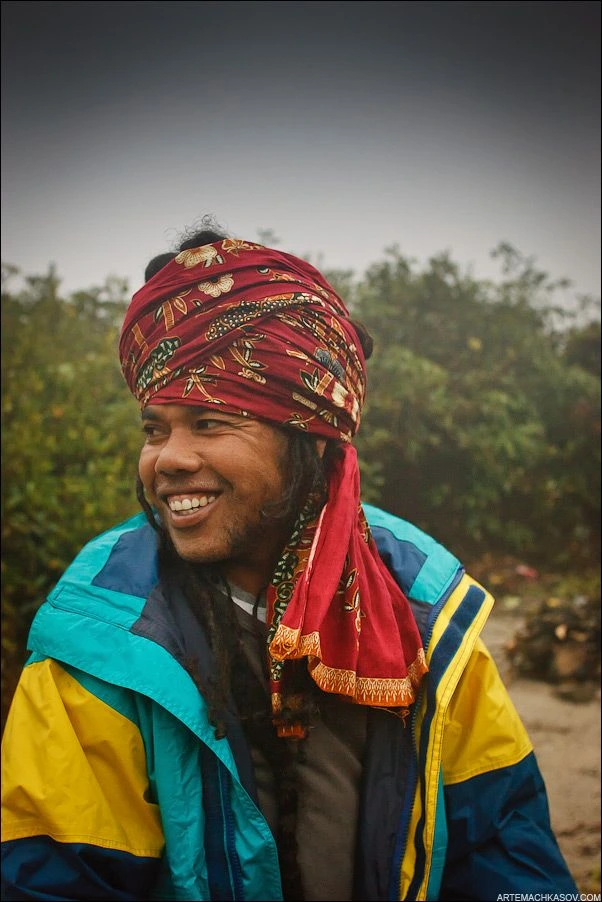
Climb to the top, to the crater of the volcano in two ways - through the jungle and on the road. We were in Berastagi at the end of the rainy season, and Smiley did not recommend us to climb through the jungle, which we subsequently never regretted. Another "cheat": the first few kilometers of track quite dull with a sports point of view - this part is held at a good asphalt road, so we were waiting at the bus ticket was very helpful. Minibus we got to the end of the asphalt road. From this point to the top of the crater - about an hour way.
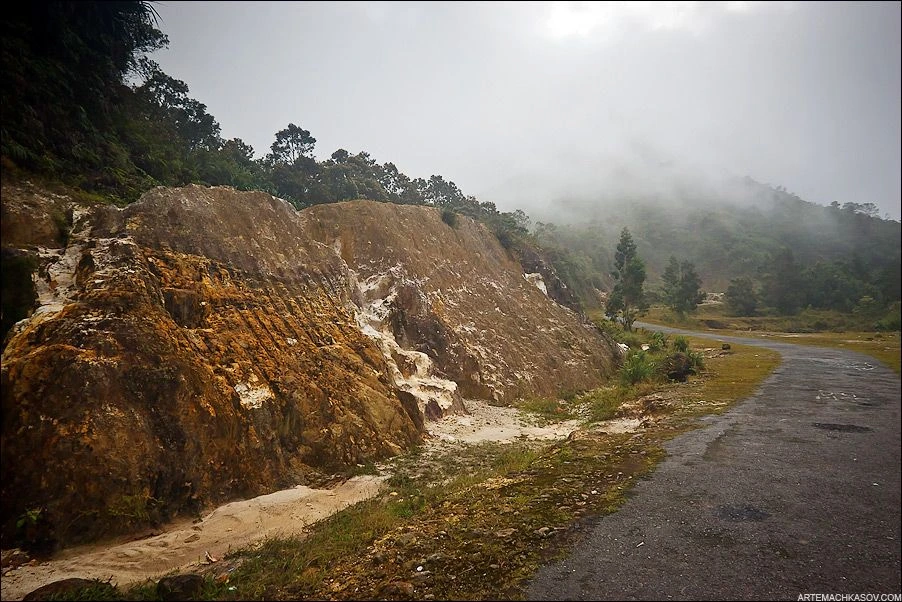
Beginning of the road to the volcano - perfect for the trail, built many years ago. Puffing sulfur geysers, volcano Sibayak been investigated by Dutch colonists in the 19th century - and quickly became a popular target for trekking. It happened shortly after our guide ancestors learned from the Dutch grow fruits and vegetables, and promised to finally tie with cannibalism.
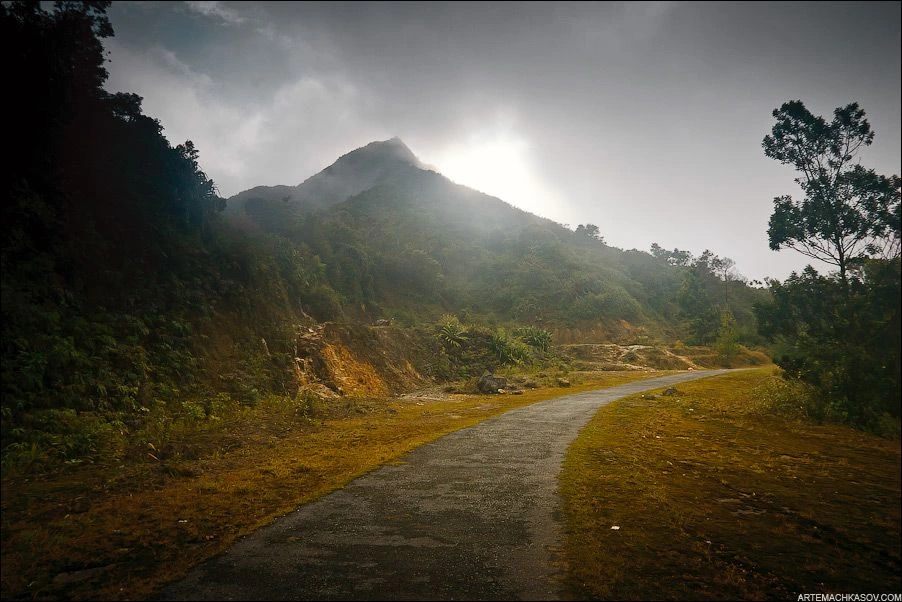
As we approach the crater, the path becomes narrower.
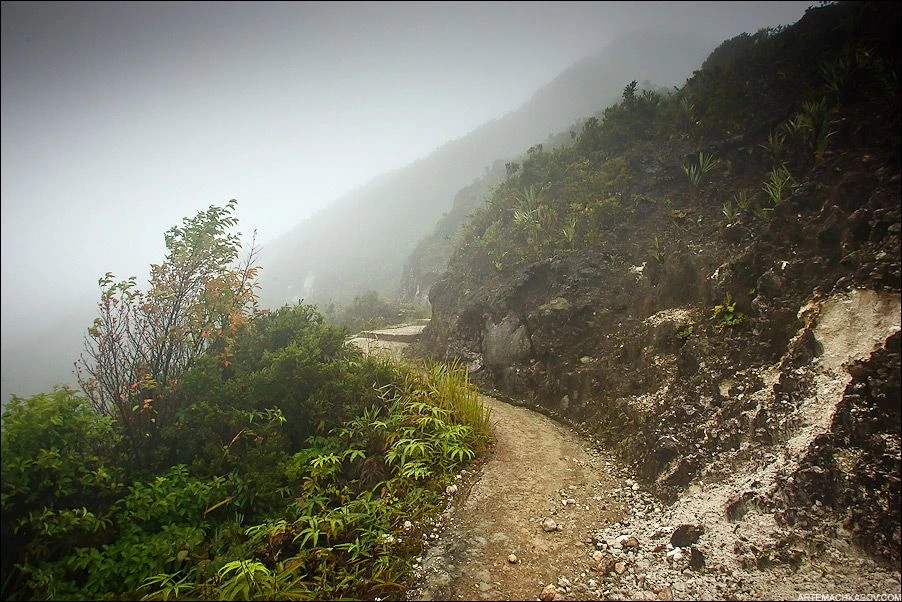
As altitude increases, the path becomes not only have, but also more difficult. Wet stones and yellow clay - slippery!
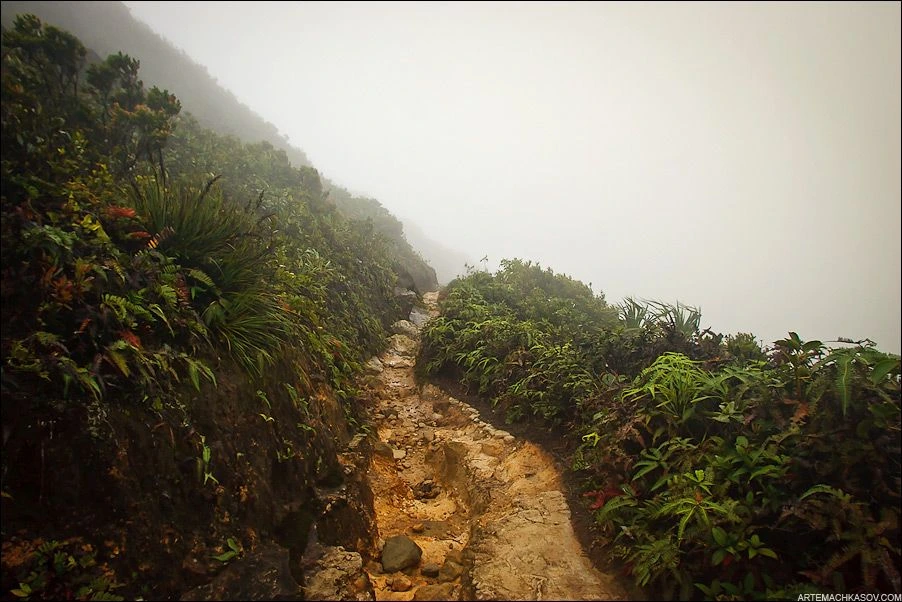
The path in the fog
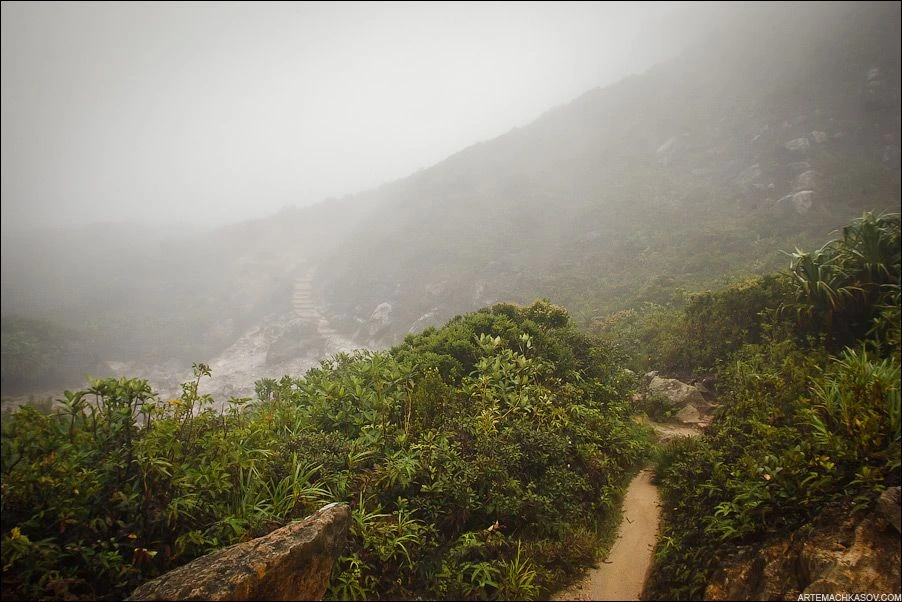
The rise is becoming more interesting.
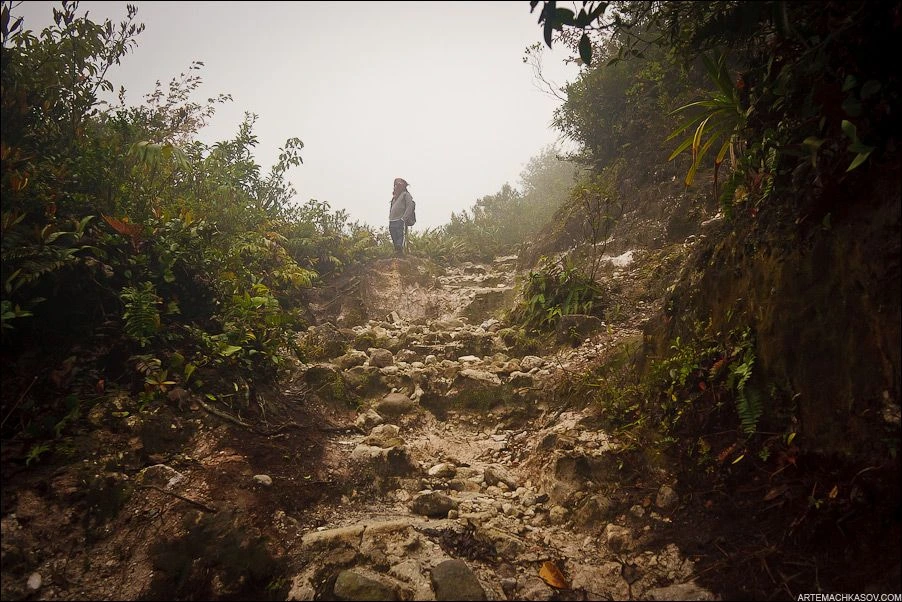
Flowers beside the path
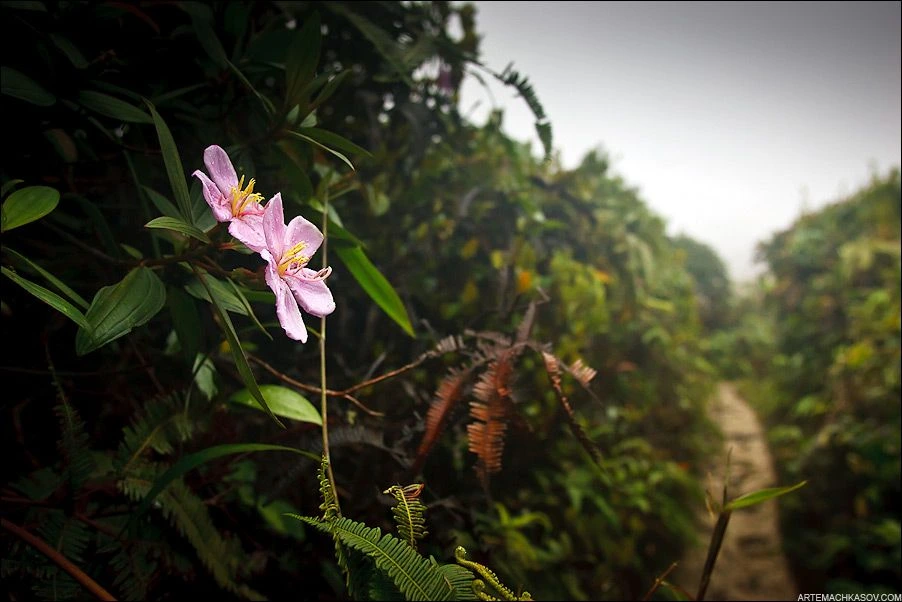
Volcanic stream. Prior to the crater of the volcano - a stone's throw. Air becomes saturated with the scent of sulfur denser.
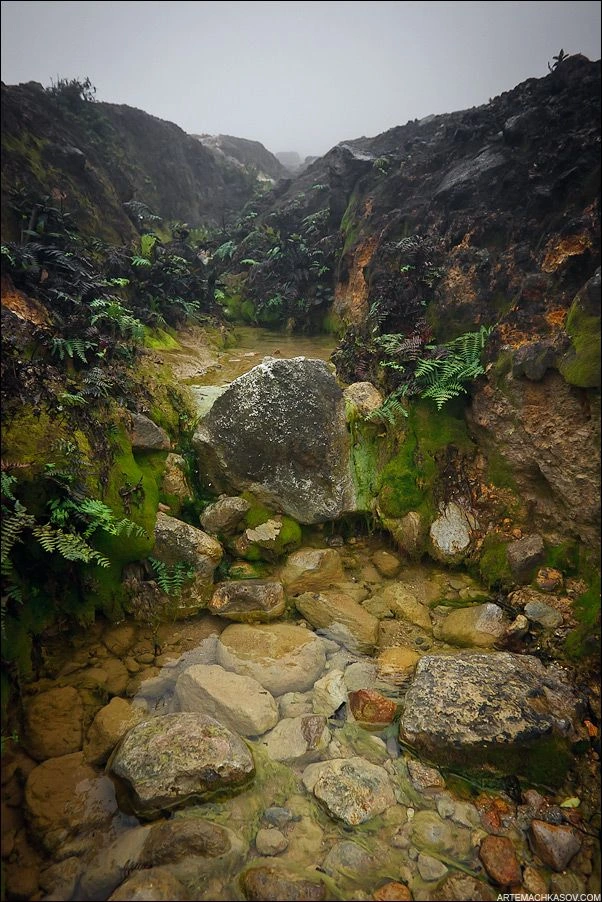
And here is the source of a sulfur smell - yellow muzzle fumaroles. Fumarole - a kind of well, leaving deep into the bowels of the earth - their way through the hot gases dissolved in the magma.
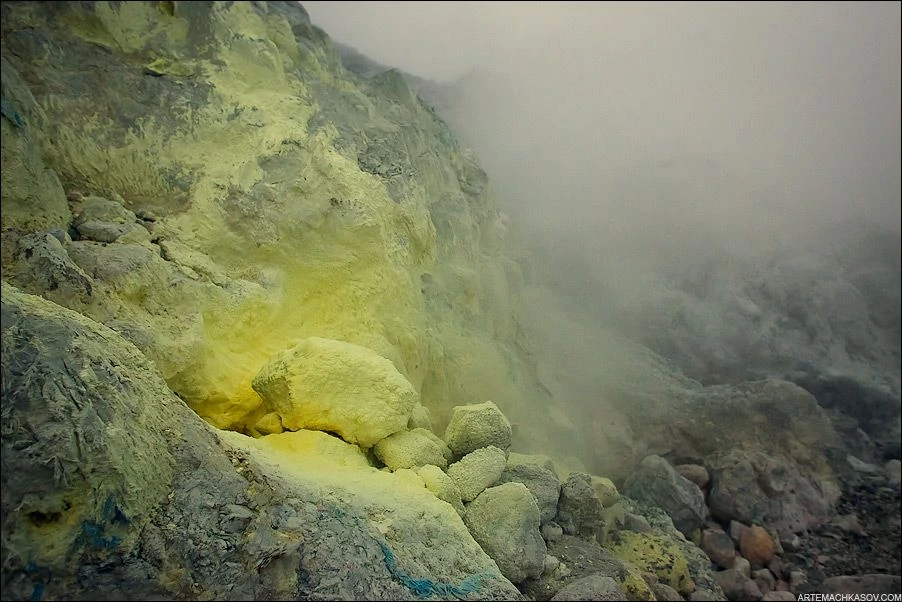
Over large clouds of thick steam fumaroles, because the magma contains a large amount of water. In addition to water, through fumaroles produces carbon dioxide, various oxides of sulfur, hydrogen sulfide, hydrogen halides and other chemicals, which makes them dangerous for human isolation. However, Sibayak smokes now slightly.
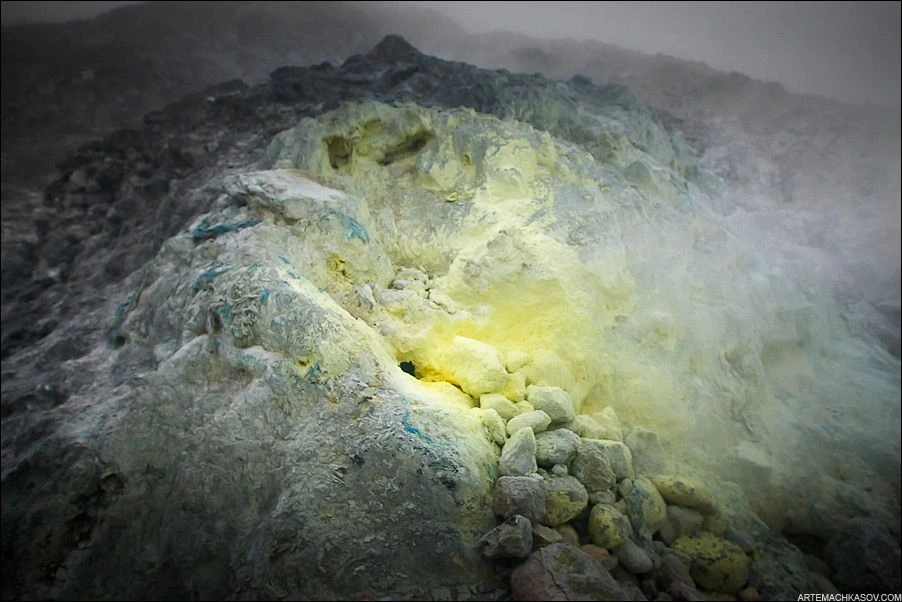
Saturated with water and seasoned with spicy smell of sulfur, fumarole smoke - is a breeding ground for some species of bacteria, and many minerals produced from fumaroles, for example, brimstone, have a biological origin. Brimstone such native. Sometimes fumaroles come sulfur collectors, collecting fresh harvest.
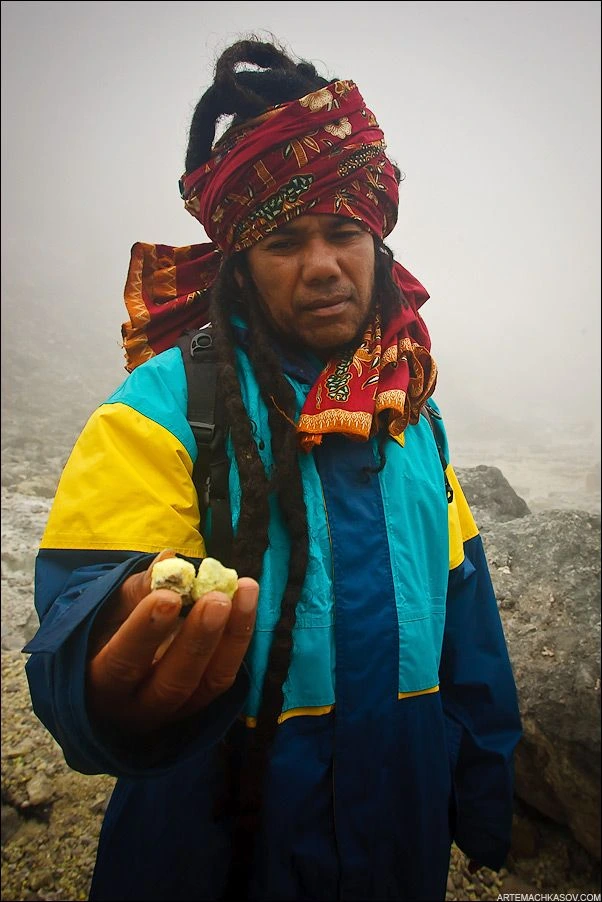
Looking at fumaroles, we went on to the crater.
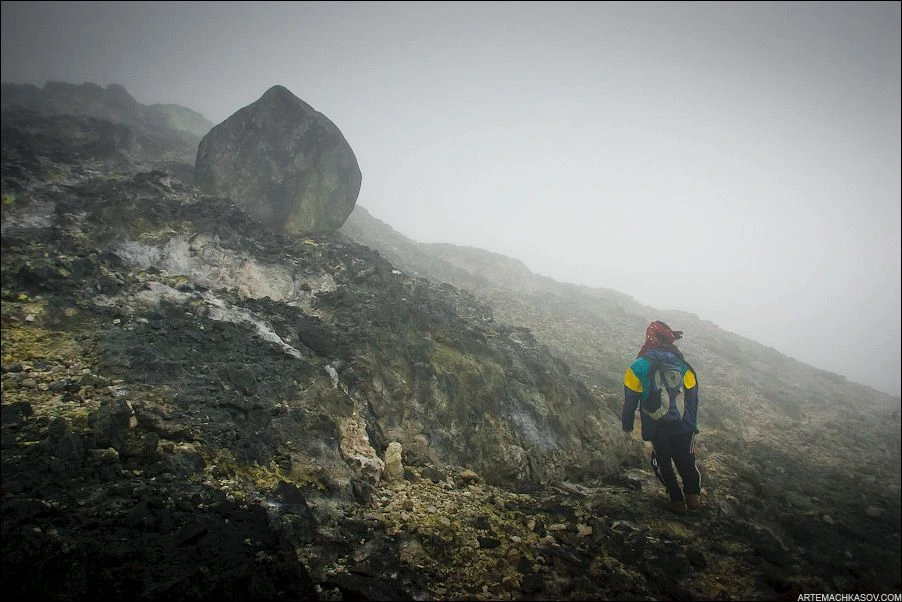
After about an hour from start lifting (with breaks for photography), we were on the edge of the crater of the volcano. Unfortunately, on this ascent we were not lucky with the weather. Light rain in the milk of the fog did not allow appreciate the beauty of all potentially gives us a panorama of the crater. Limited visibility makes it impossible to shoot distant subjects - everything was a blur.
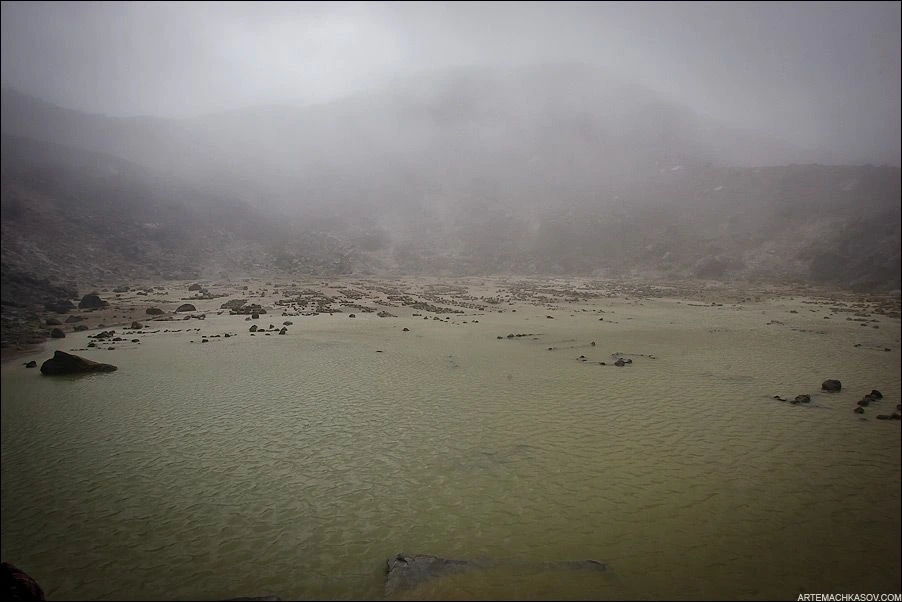
Currently, the crater is a small lake at the bottom of which is partially dried up stones lined names visit his irreverent tourists.
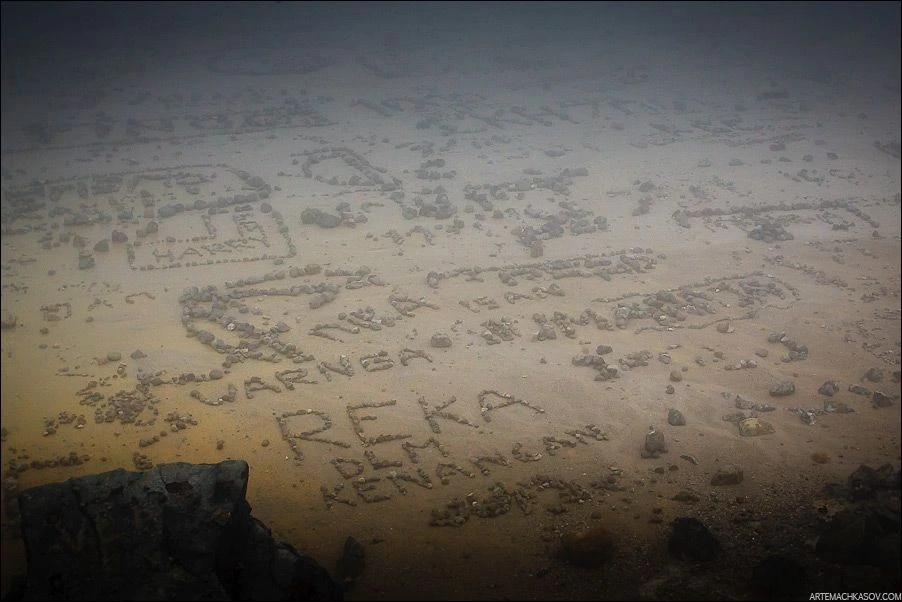
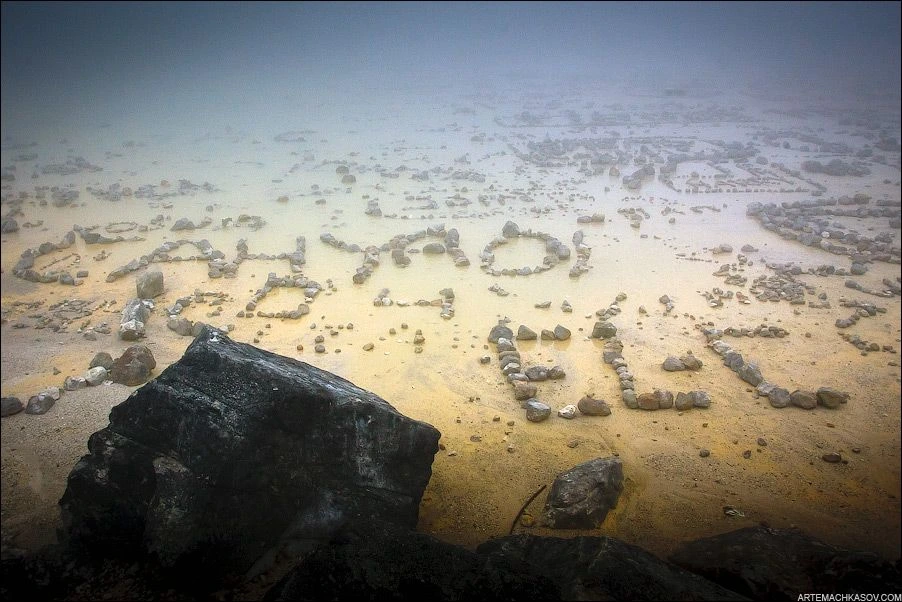
Because of the high humidity the camera lens and the viewfinder is constantly covered with water drops. No matter how I tried to change the lens without the victims could not - in the droplets appeared as a mirror and a camera matrix. However, at a certain skill, "the speed is not affected."
Here and there, there are huge mineral formation of unusual shape - a volcanic bombs, ie lumps or pieces of lava ejected during a volcanic eruption in liquid or plastic state from the crater and received during the flight and the freezing air a specific form.
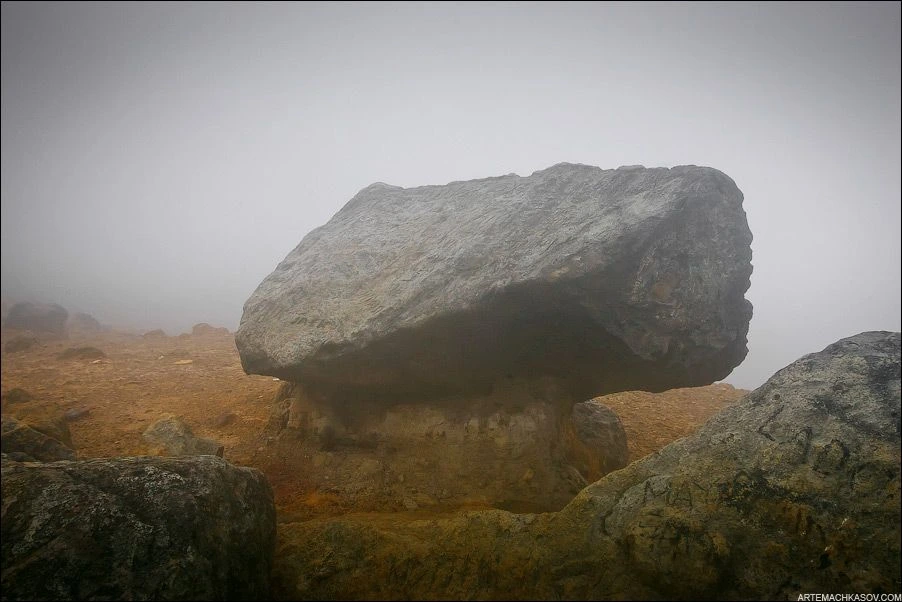
As a result, rotation in flight volcanic bombs can get twisted or spindle-shaped. Due to the plastic consistency volcanic bombs often change shape during flight or when hitting the ground. Liquid lava, do not keep cool in the air, when hitting the ground become korzheobraznuyu form.
In addition to volcanic bombs inside the crater you can see all the pieces of lava piles.
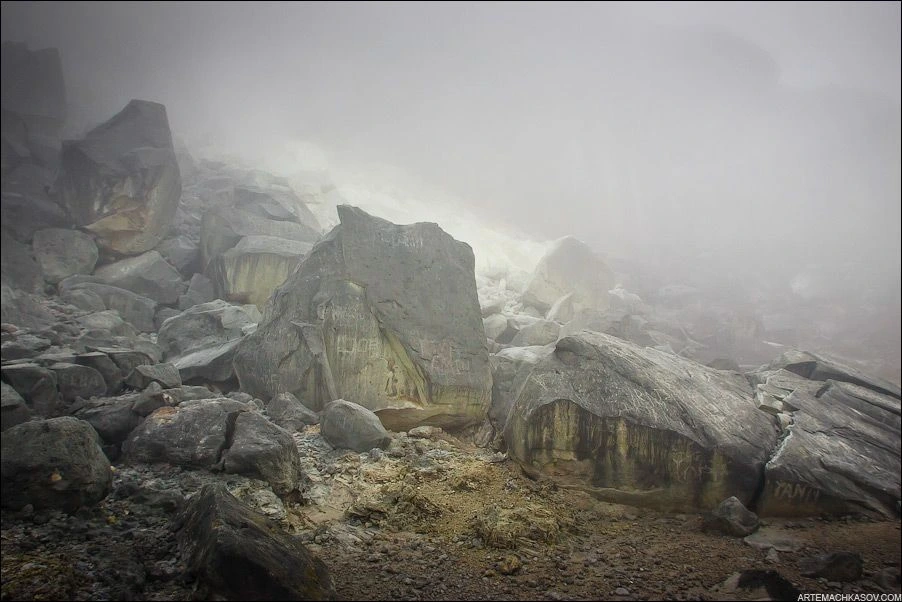
In bad weather, climbing the slippery lava without proper footwear and gloves would be very difficult, so once again we were glad that they took with them all the necessary equipment, including trekking poles and membrane jackets.
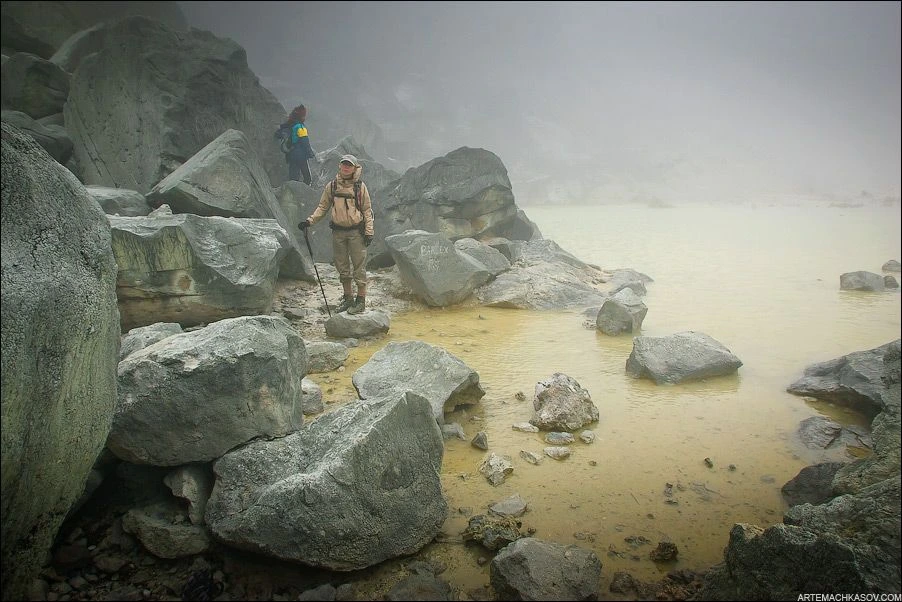
Volcanic lake in the fog
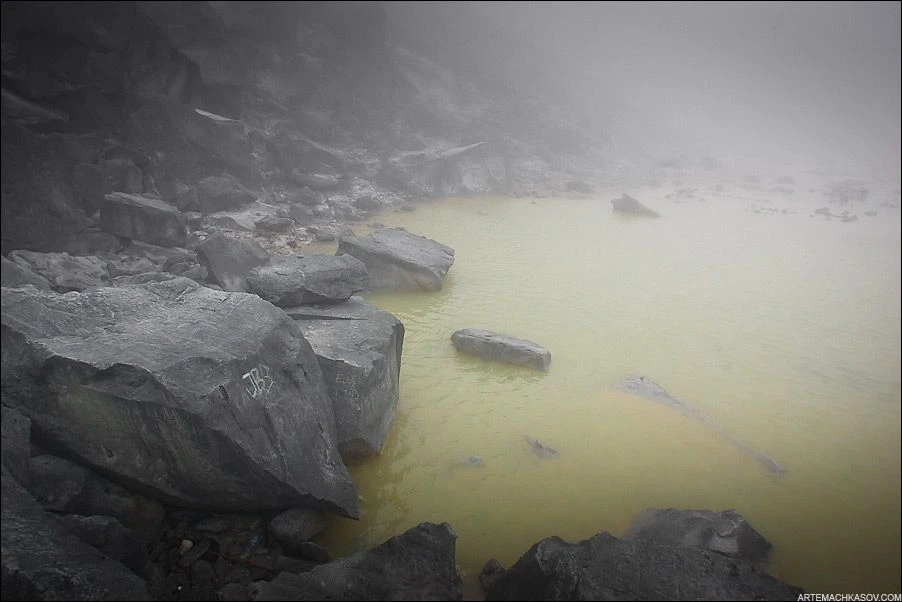
Water in such boiling springs rich in acid and sulfur. Drink is not recommended.
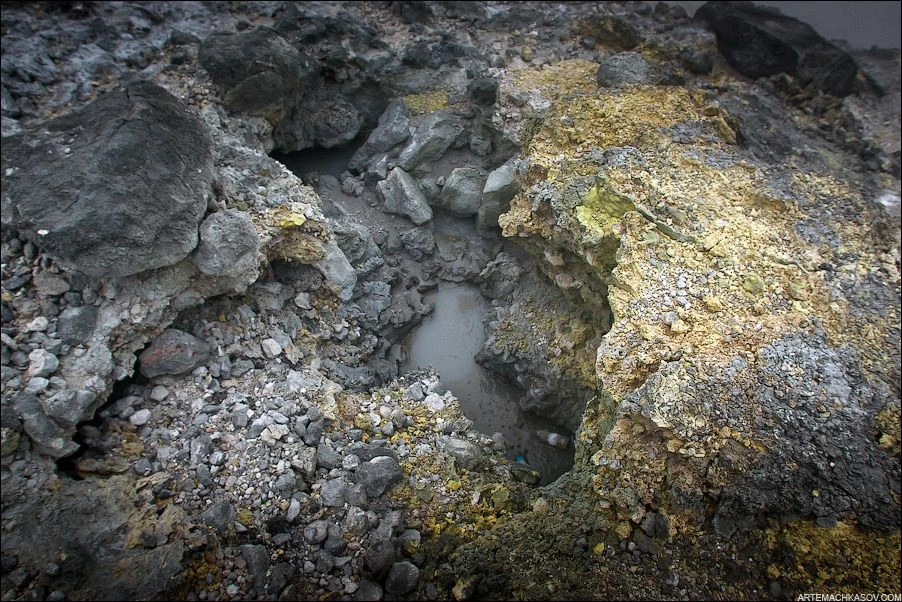
Lena
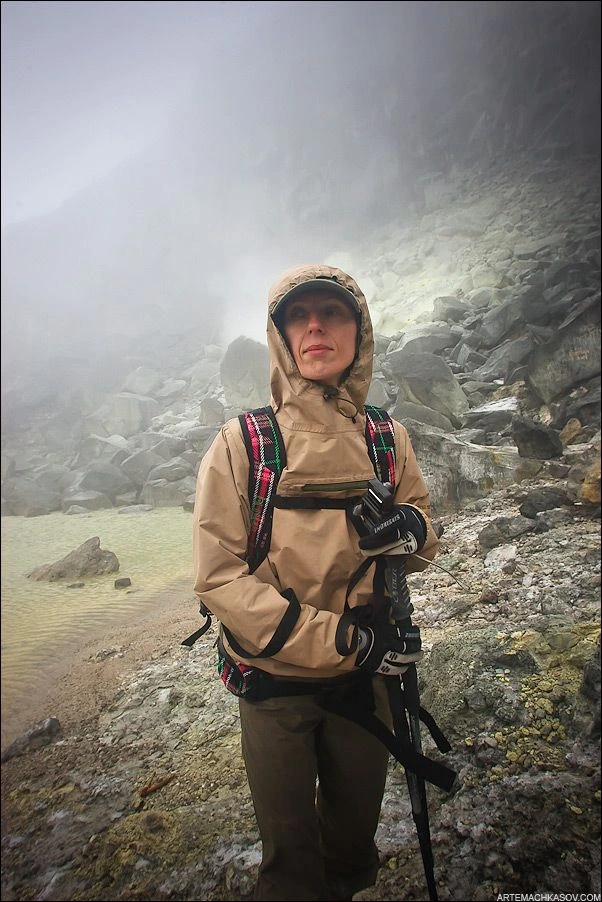
Avatars
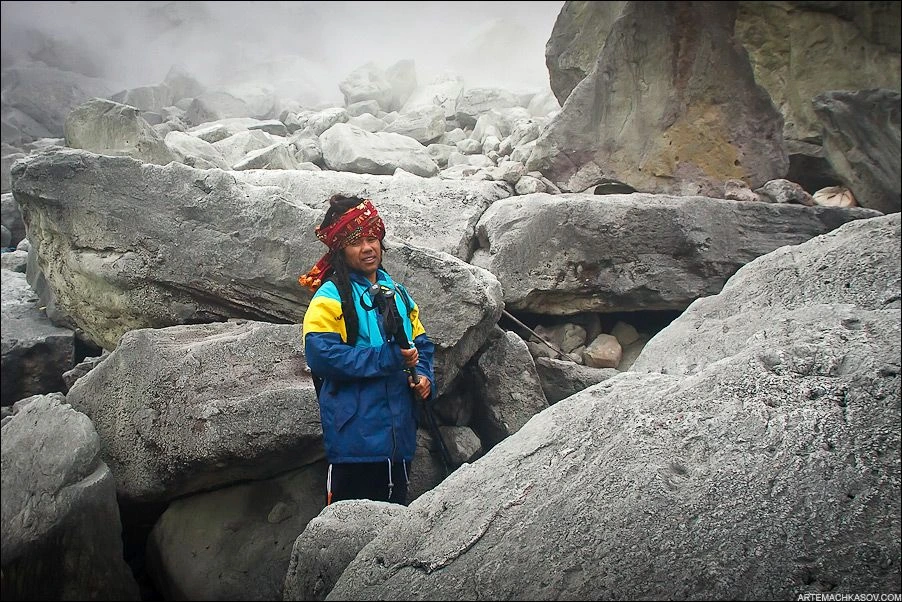
Stones on the bottom of the lake
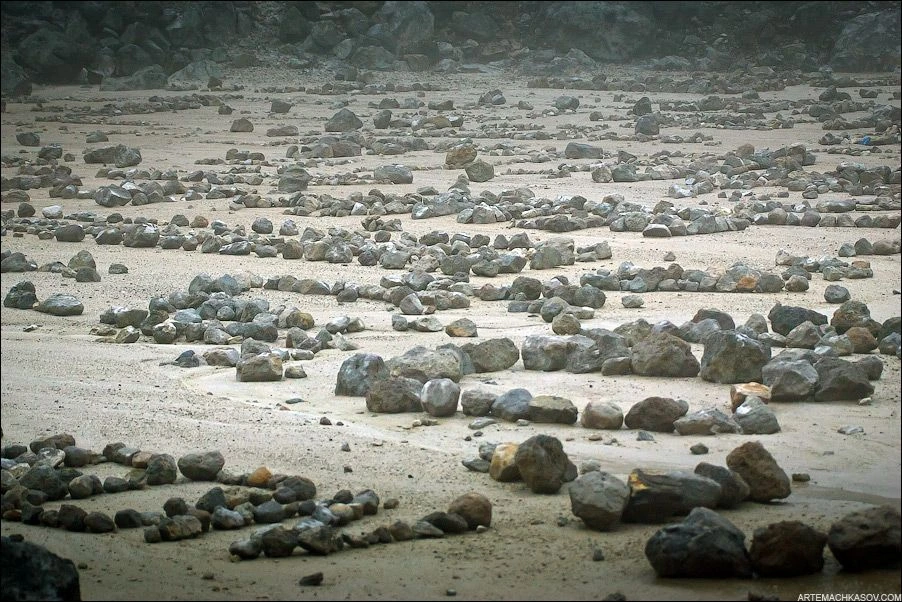
The soil is rich in sulfur
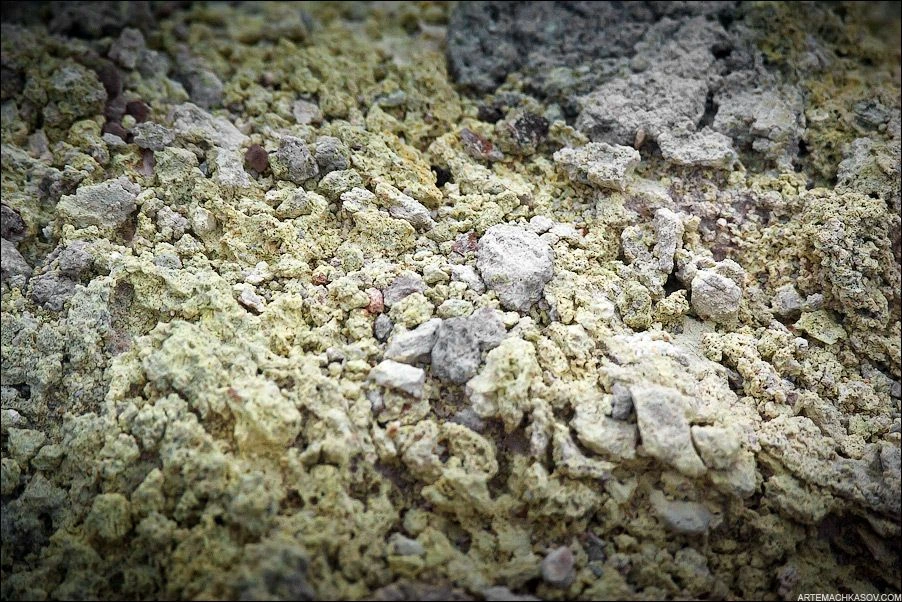
Unfortunately, there are many local Sibayak tourists who do not care for nature, throwing empty bottles, jars and packets of crisps in their places of devastation. Someone lost and vibramovskuyu sole.
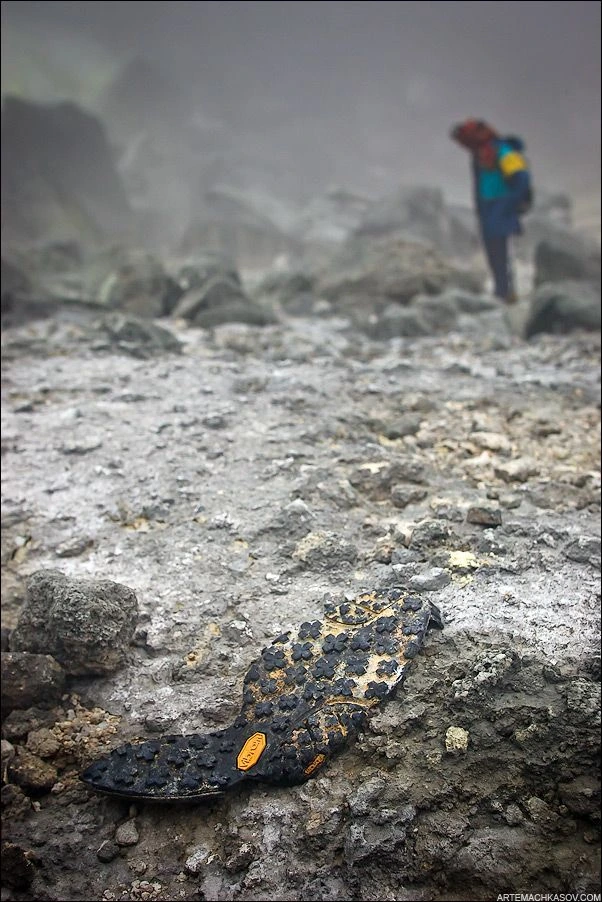
Including garbage lying directly in the fumaroles.
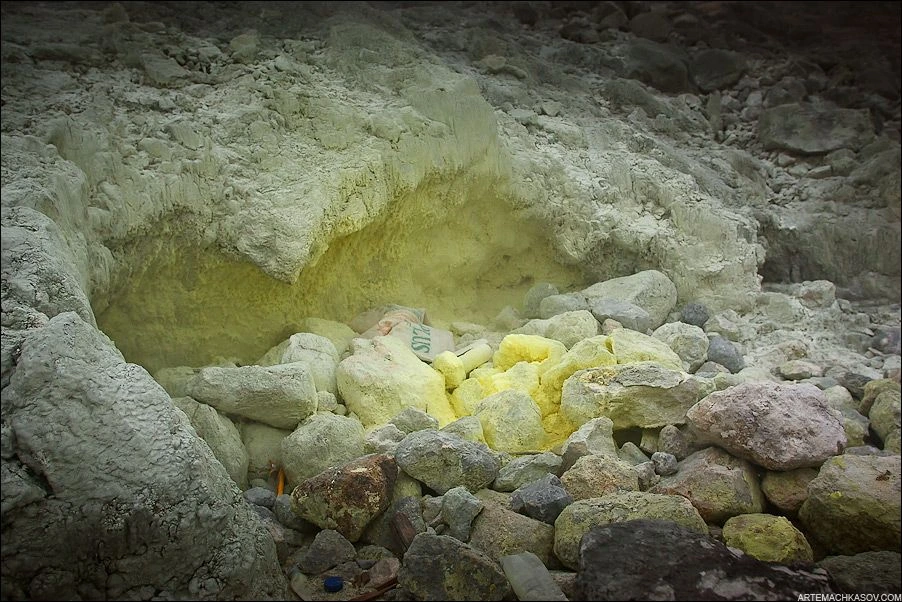
Couple of pieces of sulfur fumaroles memory
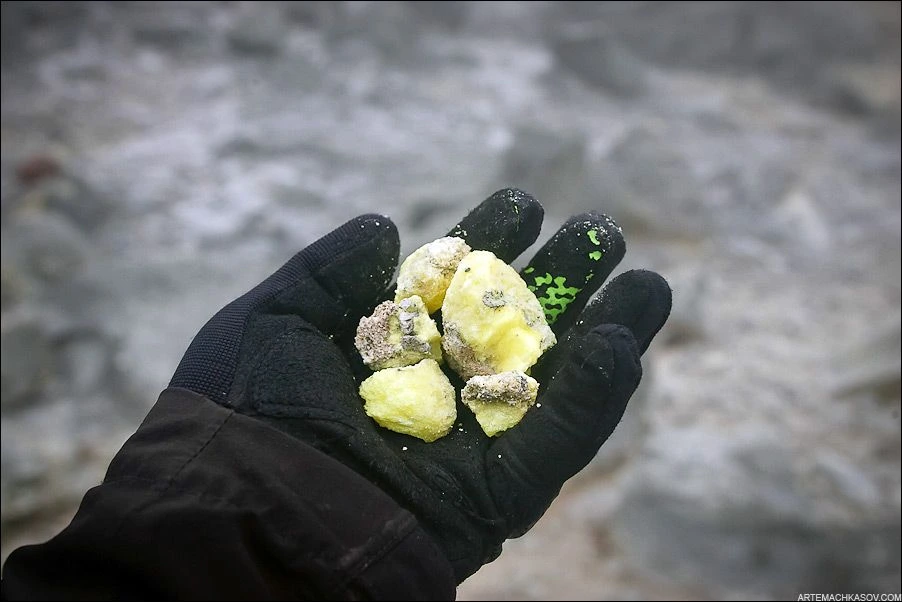
After waiting in vain for good weather and a half hours, we decided to return to the city. Crater of the volcano was still tightly wrapped clouds, like in the morning.
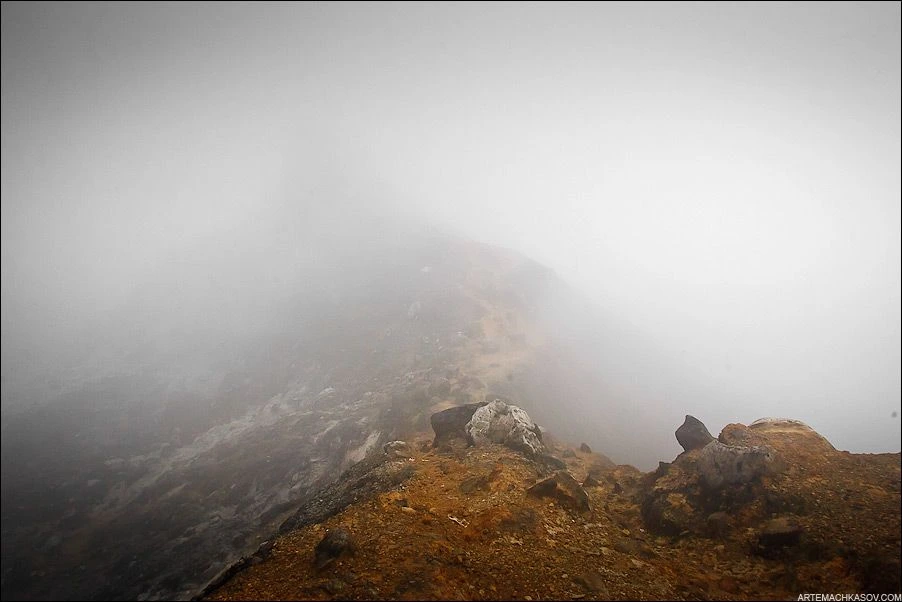
One of the peaks of the crater.
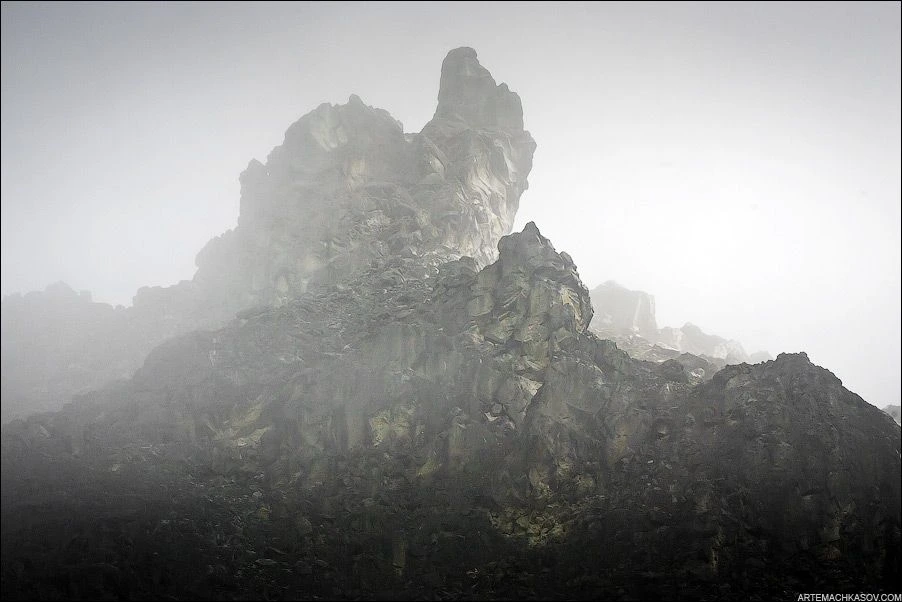
The rain was not strong, and down from the volcano we decided through the jungle. Finally - a view of the crater wall.
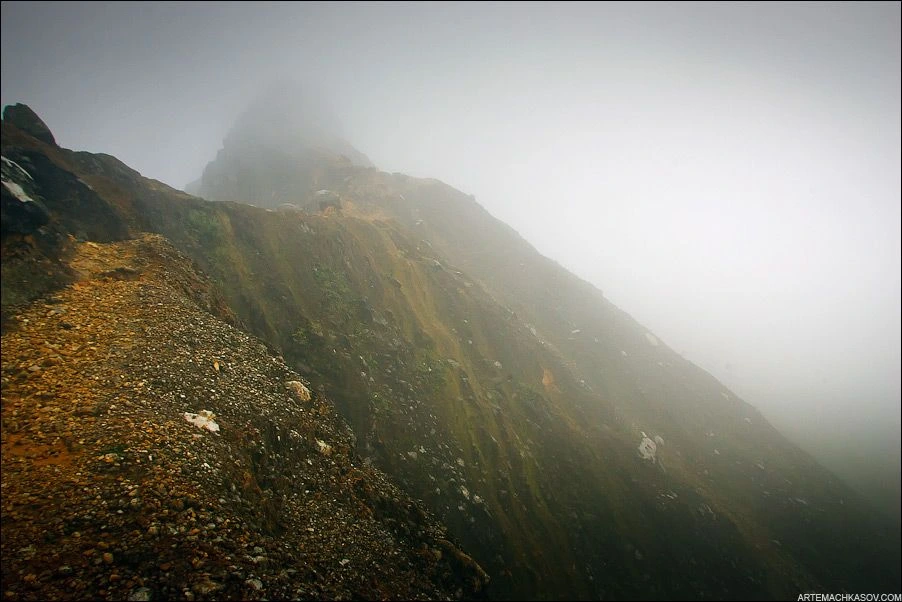
Another
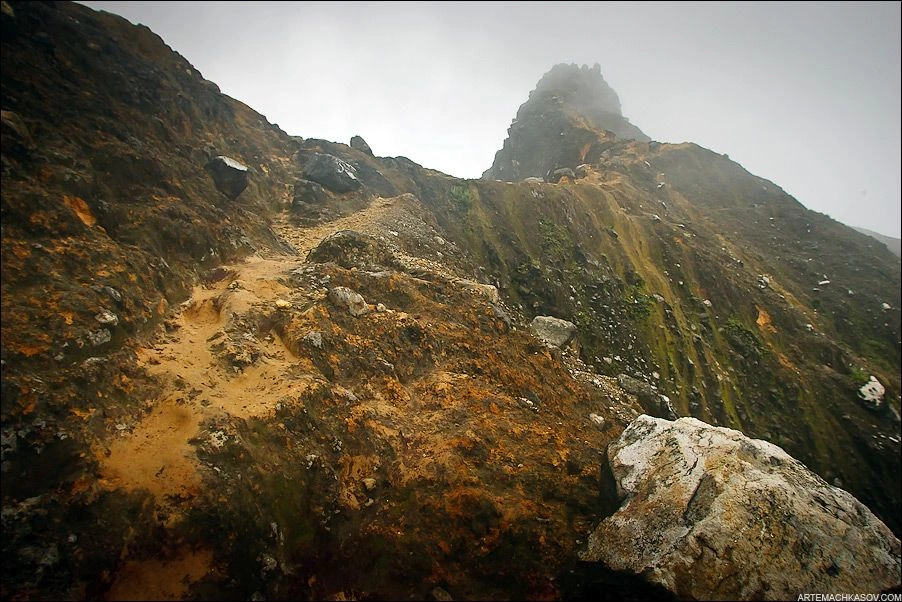
Underfoot - volcanic rocks and ferns.
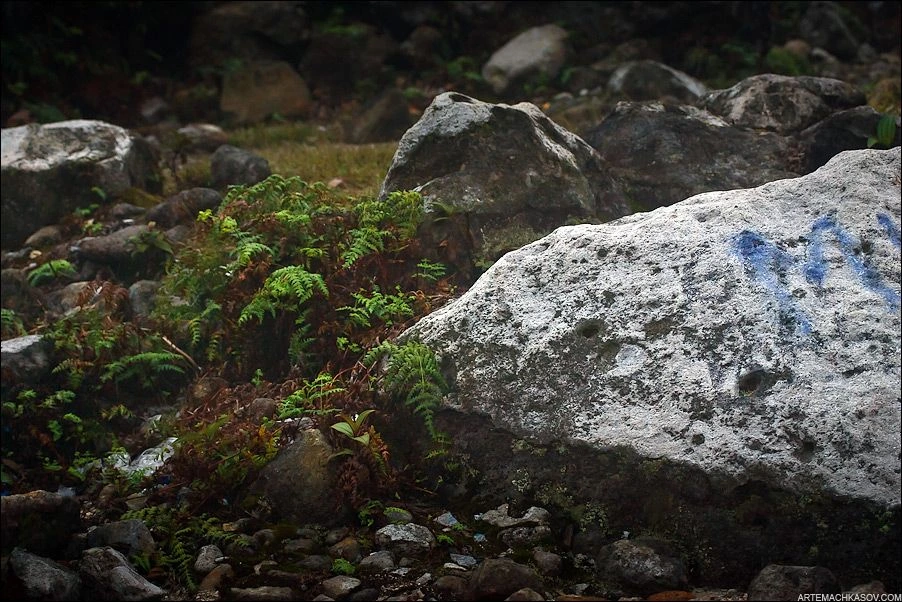
Clouds tightly wrapped up Sibayak and neighboring vertices.
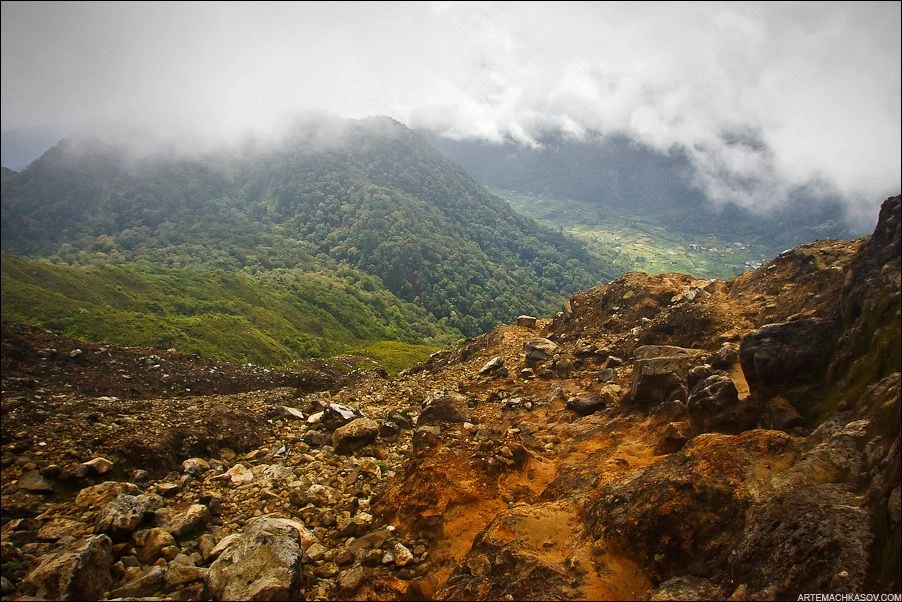
The lower, the more vegetation on the slopes.
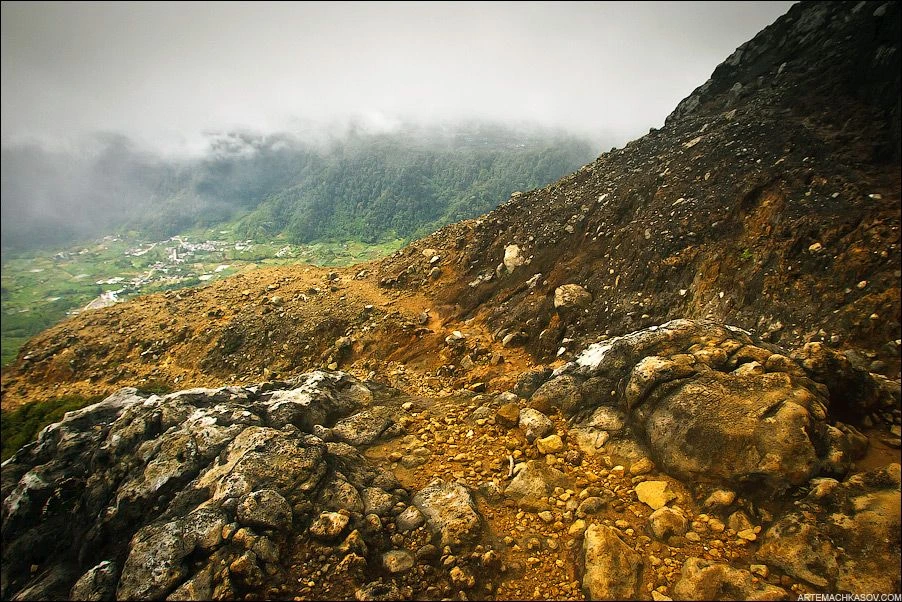
Going down below, we came out of the clouds, and around a bit clear. It became clear that views on both sides delicious

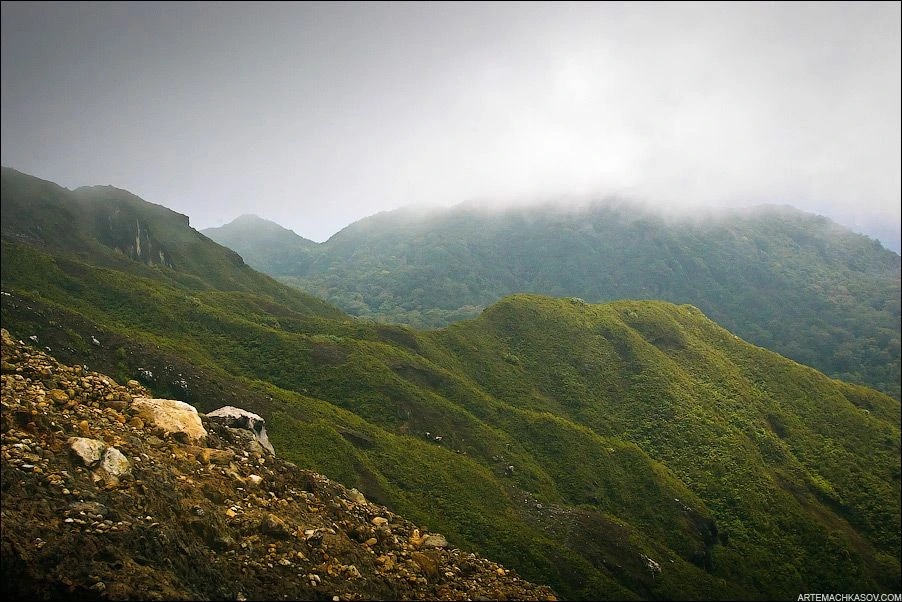
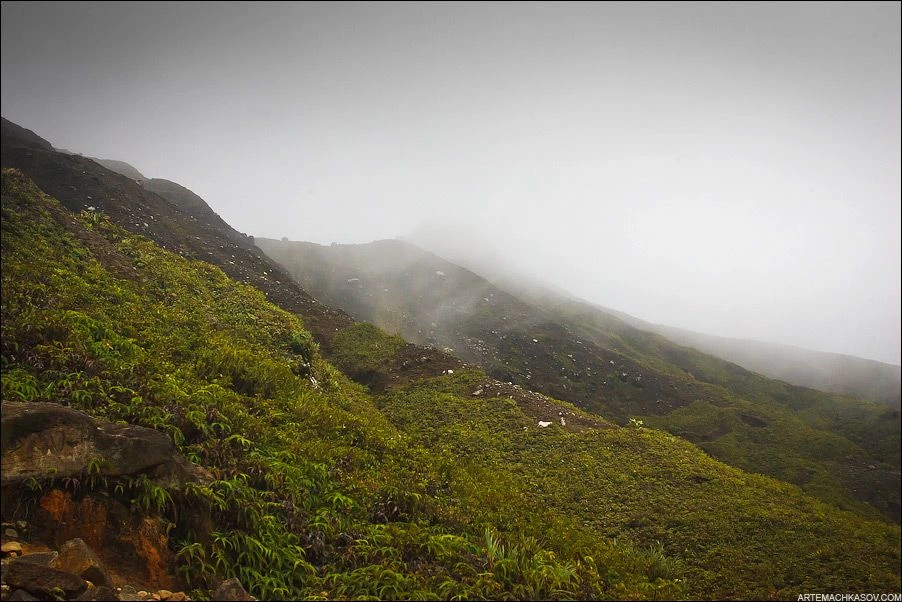
The view from the heights
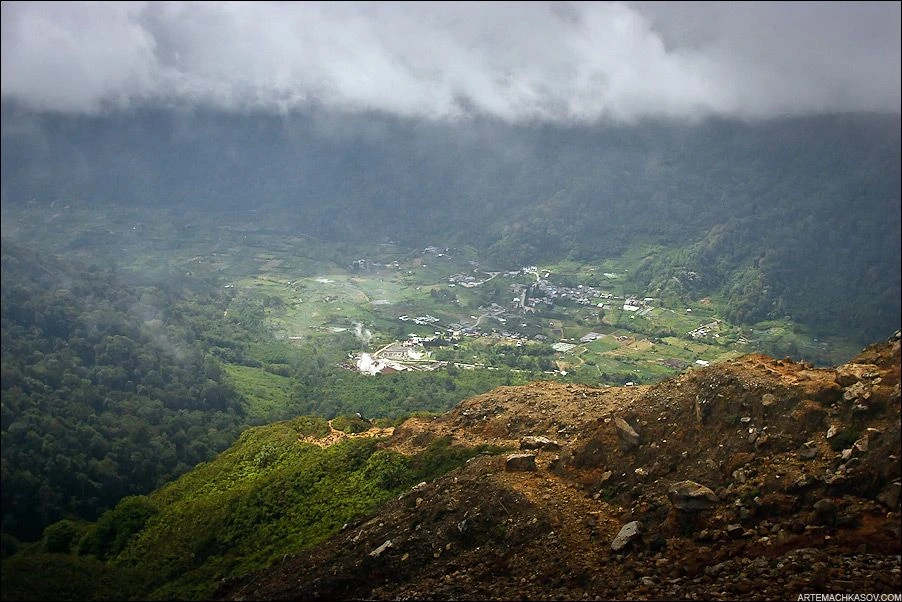
Suddenly the path on which we move, dived into the dense thickets of ganging up over his head.

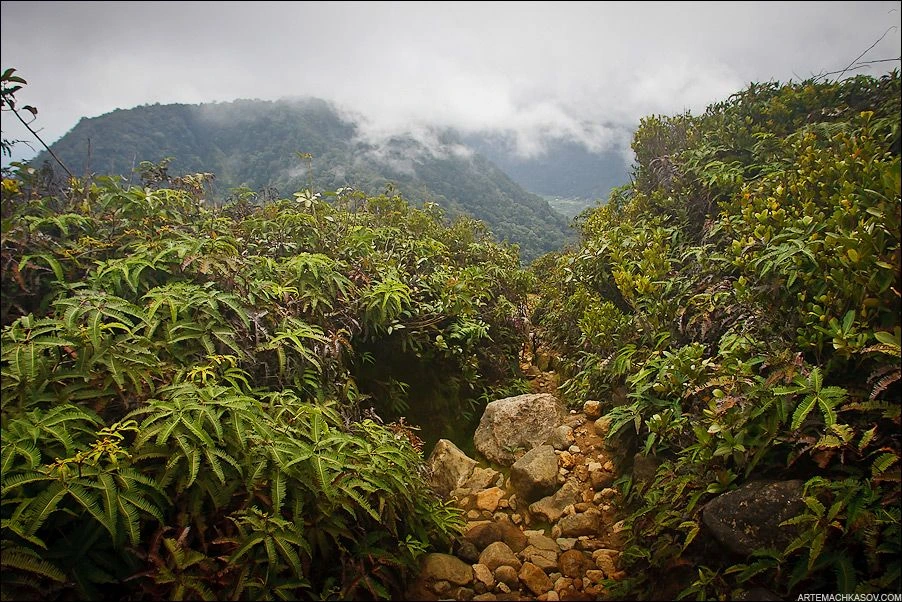
View to the top
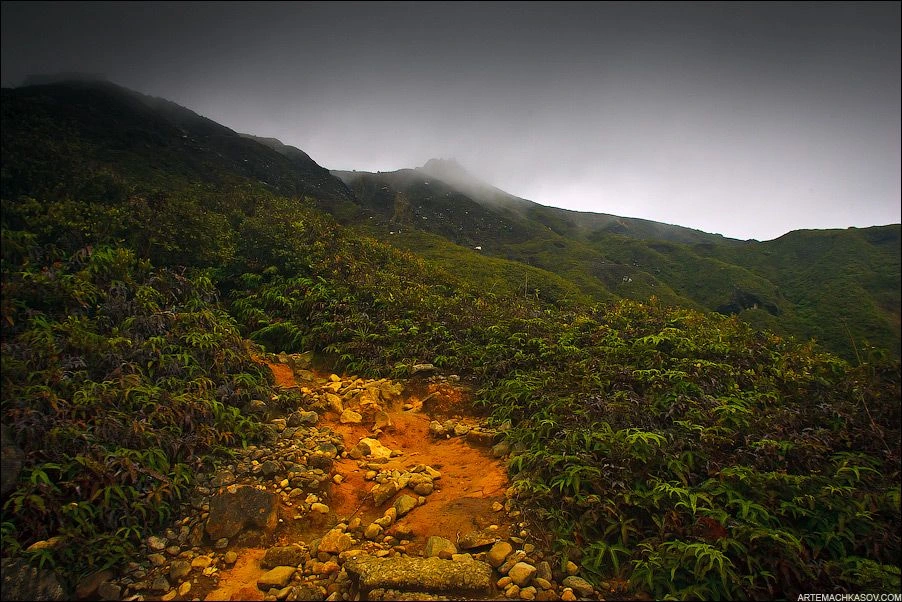
Soon on the sides will only jungle. And while this form.
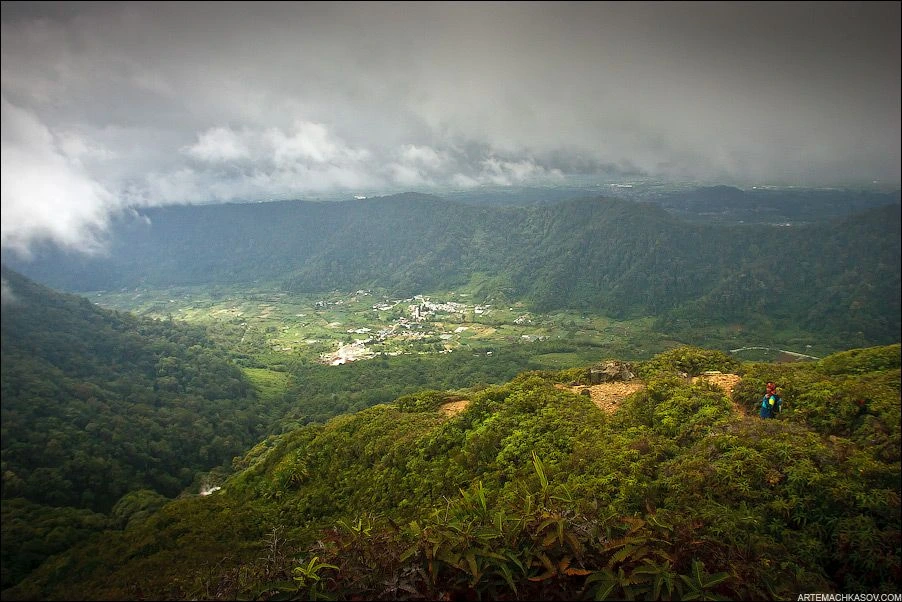
It is time to Jungle Trek!
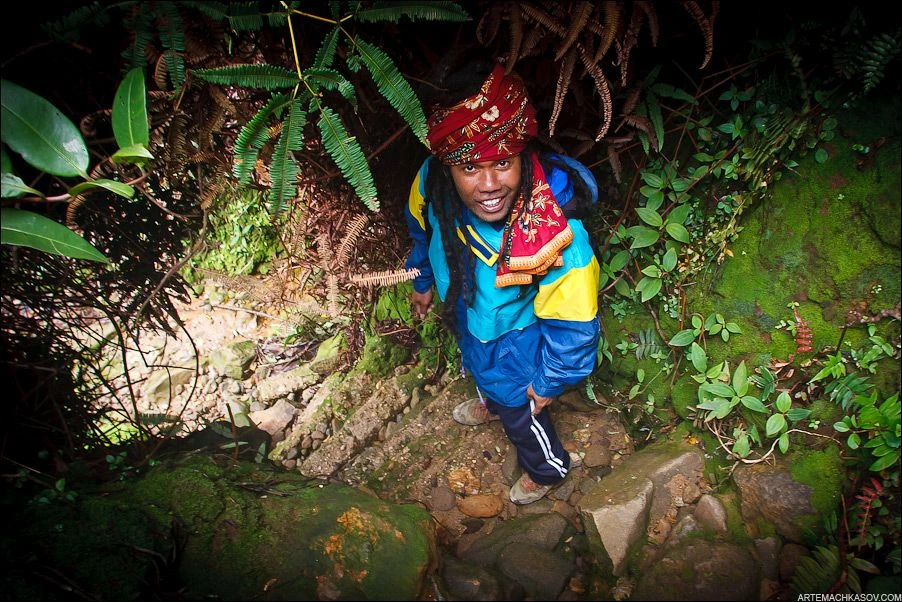
Slope, slippery and dangerous in bad weather, overcome including using lianas
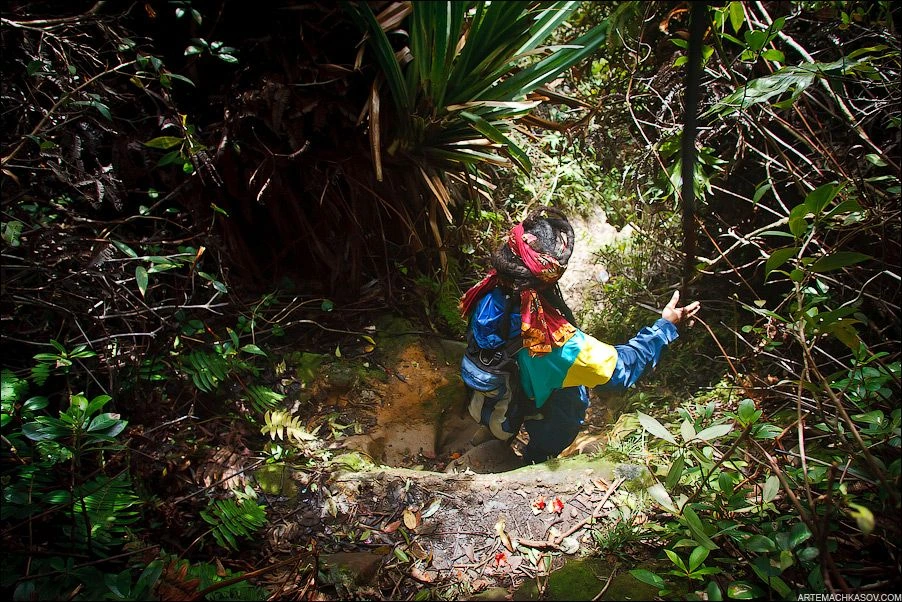
The rocky part of the descent
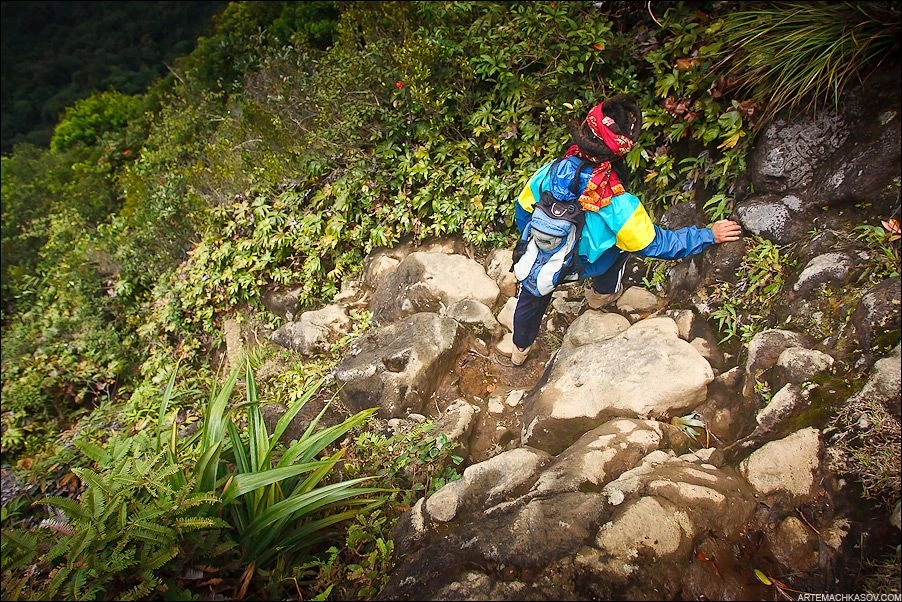
Jungle very real, with giant ferns.
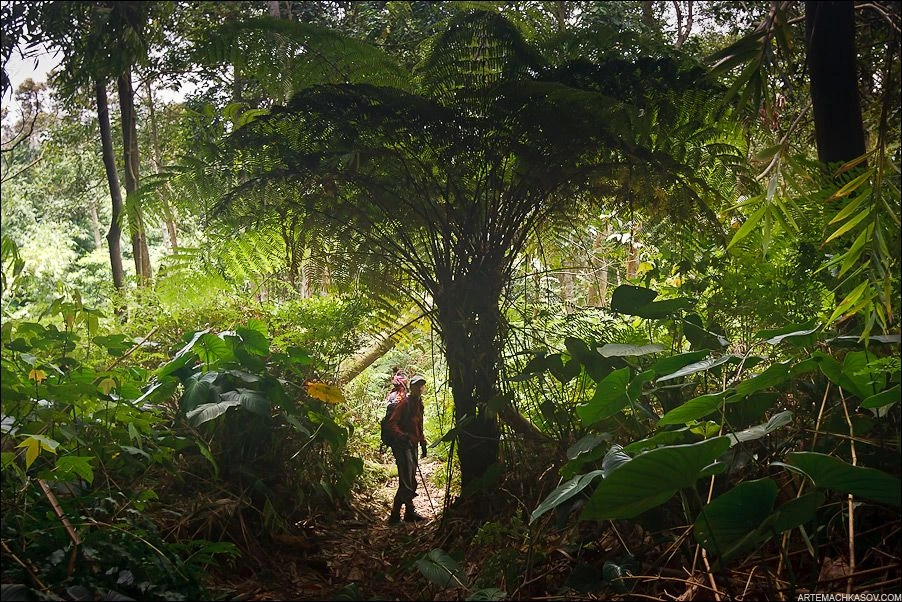
and thickets of bamboo,
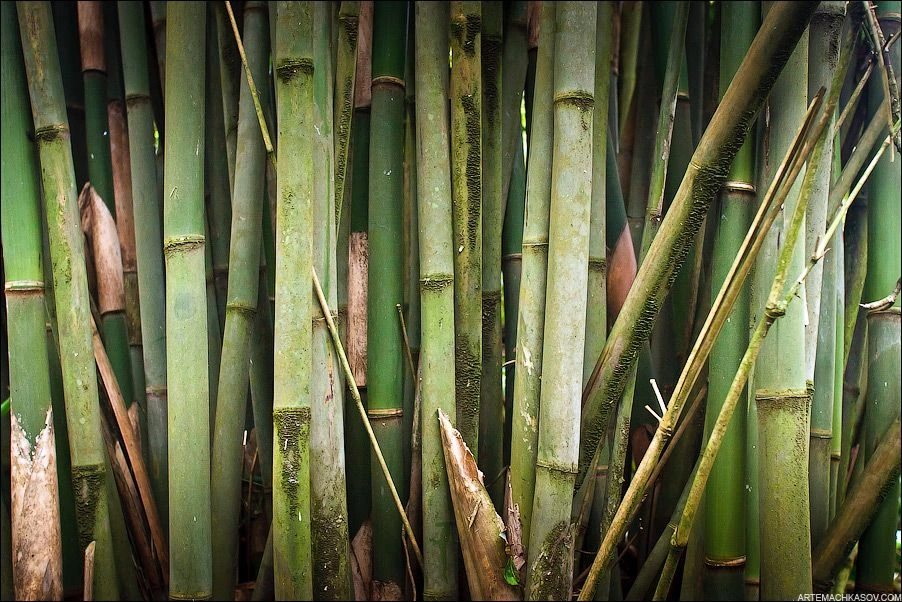
as well as bright and large flowers of wild ginger.
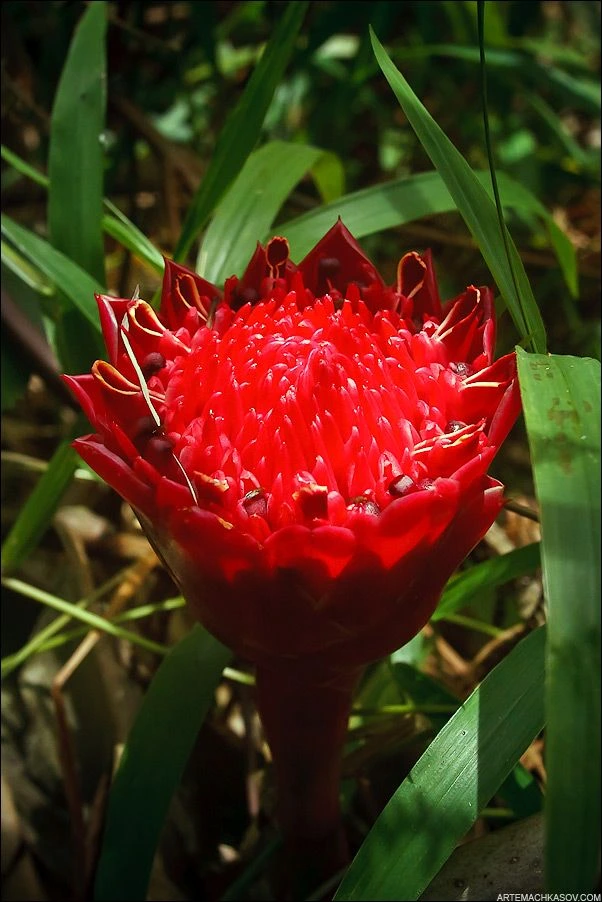
Label
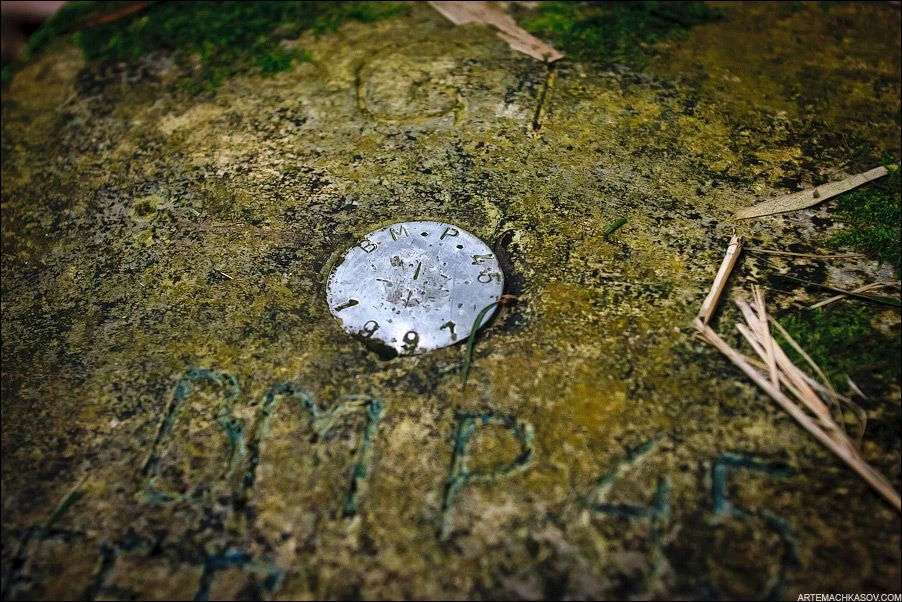
About a half hour descent - and this is our ascent to Sibayak was completed. We came out of the jungle in the valley. Opinion on the trekking part as follows: due to the relative ease of access, Sibayak is the easiest for trekking among all visited me volcanoes. However, the upper part is still largely devoid trodden paths and leaves room for the choice of trajectory. House at the foot of the volcano.
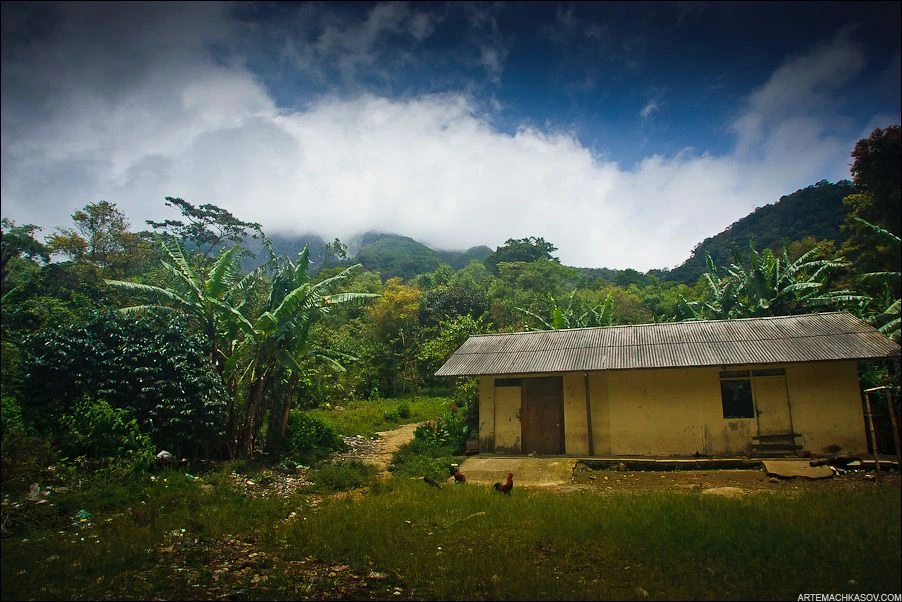
Endpoint track - Semangat Gunung, a place out of the ground massively hot geysers erupt feeding, including, and geothermal power (GPP), which provides Berastagi light and heat.
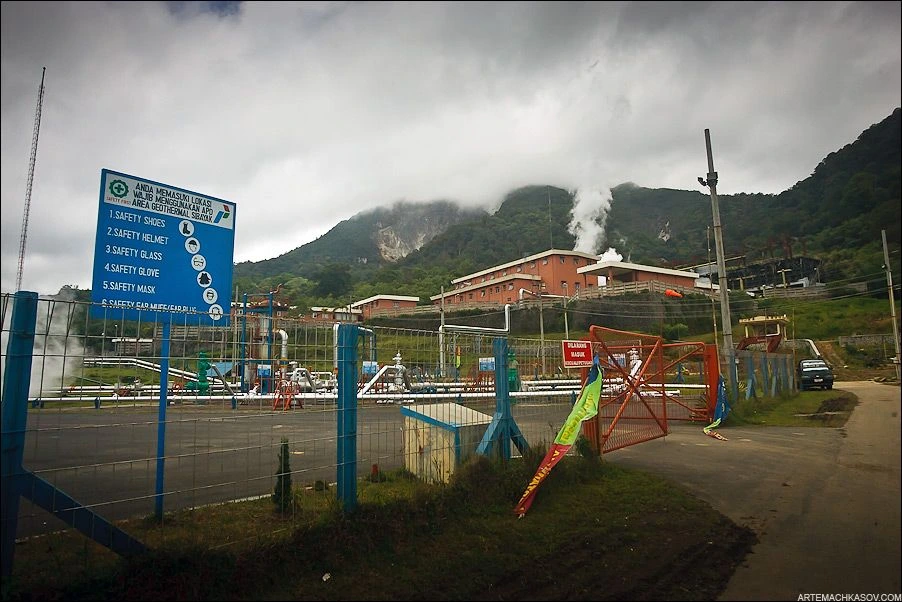
Hot steam shoots out of the ground, falling into the so-called heat exchanger, where the energy of the hot water is converted into electrical energy. This occurs through the turbine and generator, as well as many other types of power plants. As a result of manipulation, residents and businesses Berastagi get very cheap electricity - a month for a house people pay about 7,000 rupees, ie less than 1 US dollar.
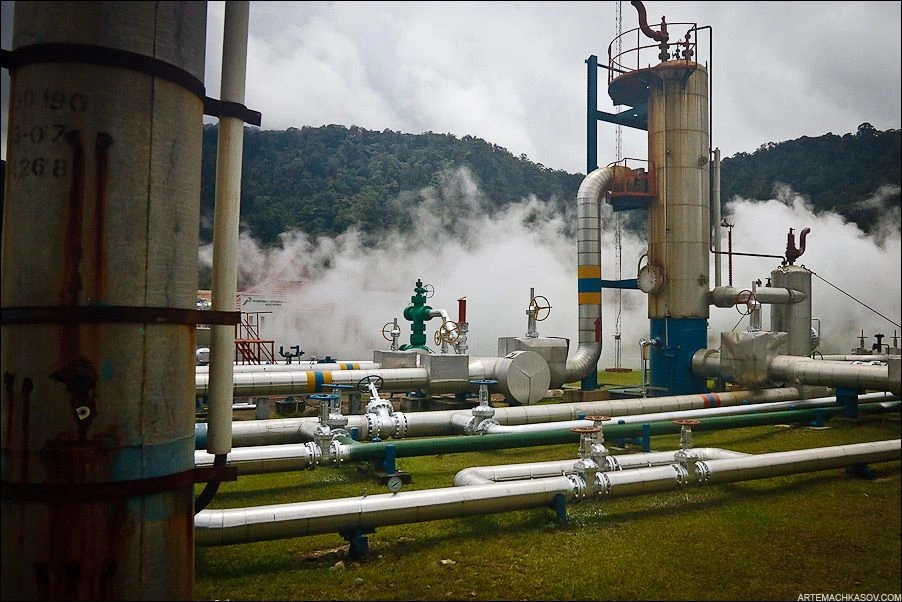
Also checkpoint Semangat Gunun interesting for its hot springs, which can be enough to splash some water in the sulphurous any degree of heat, and refuel "Bintang".
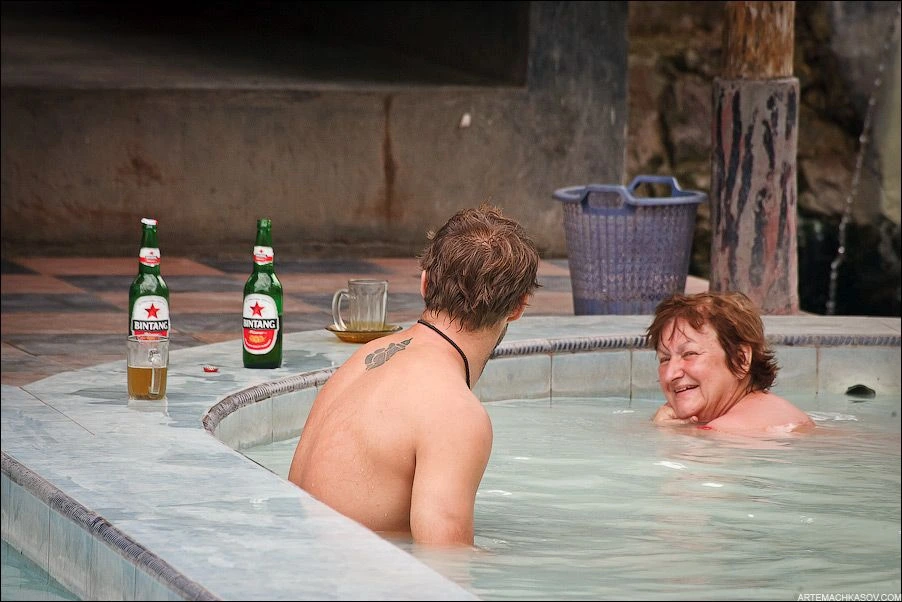
Baths of sources provides a wonderful view on the side of the crater of Sibayak.
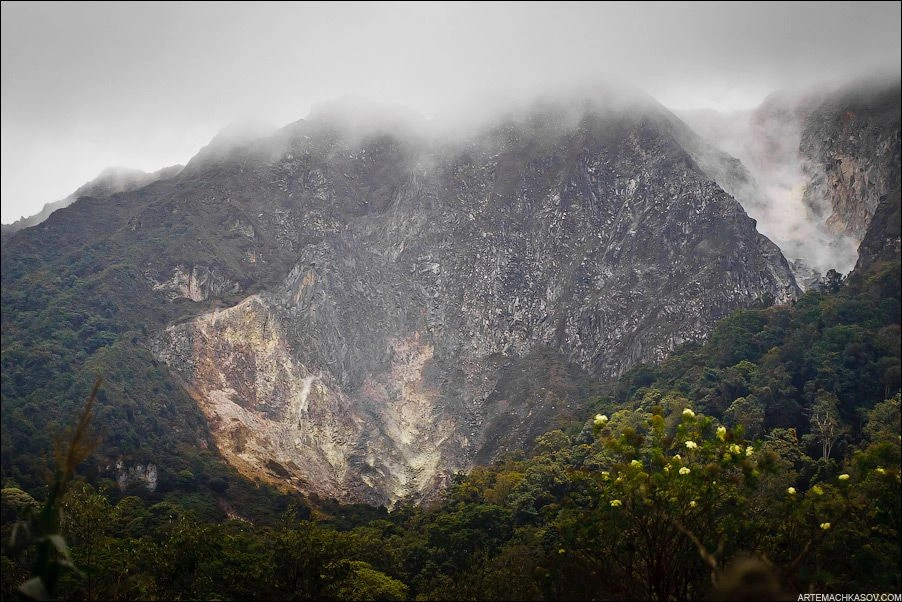
Fumaroles cover the walls of the crater
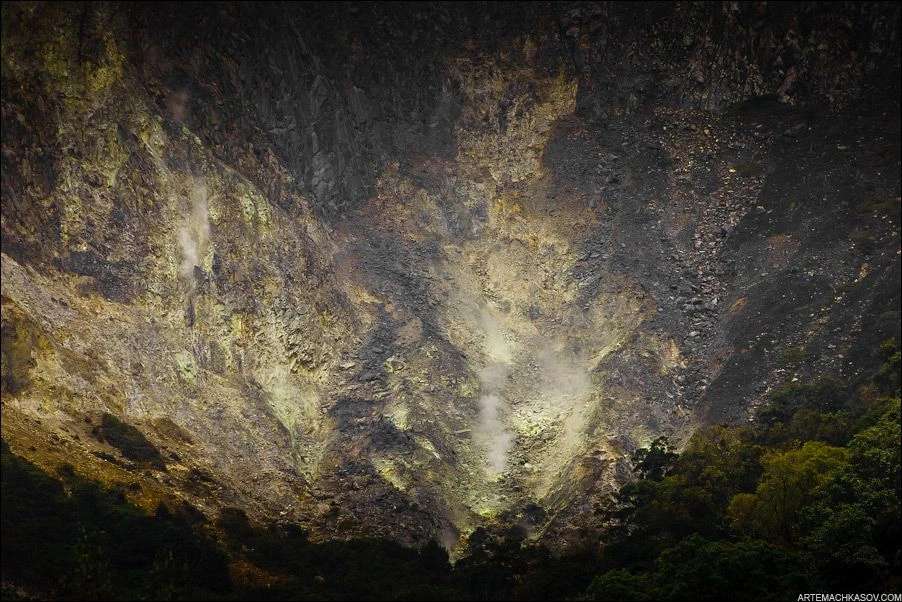
Fuming cleft
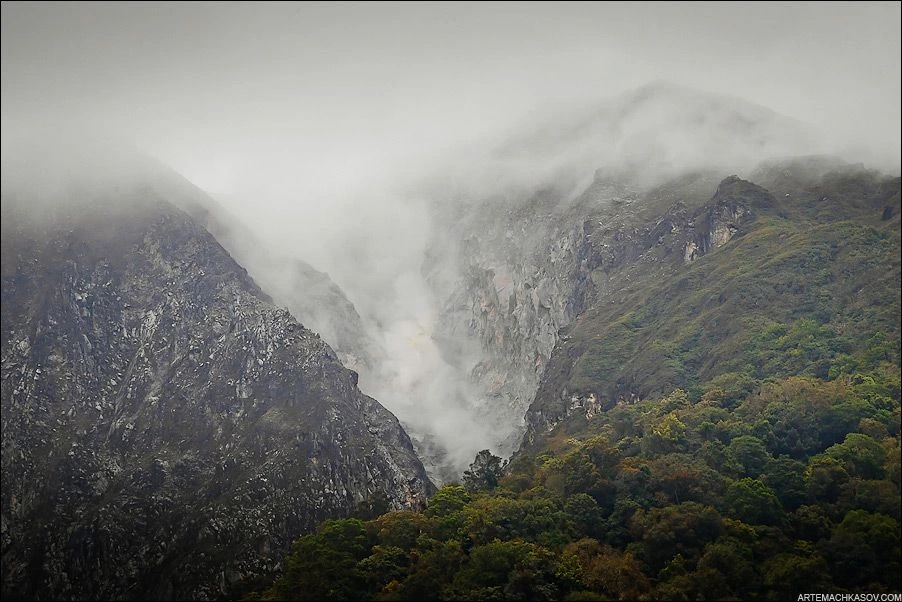
Cool off in the sources, we went towards the city on foot, to photograph a general view of the Sibayak.
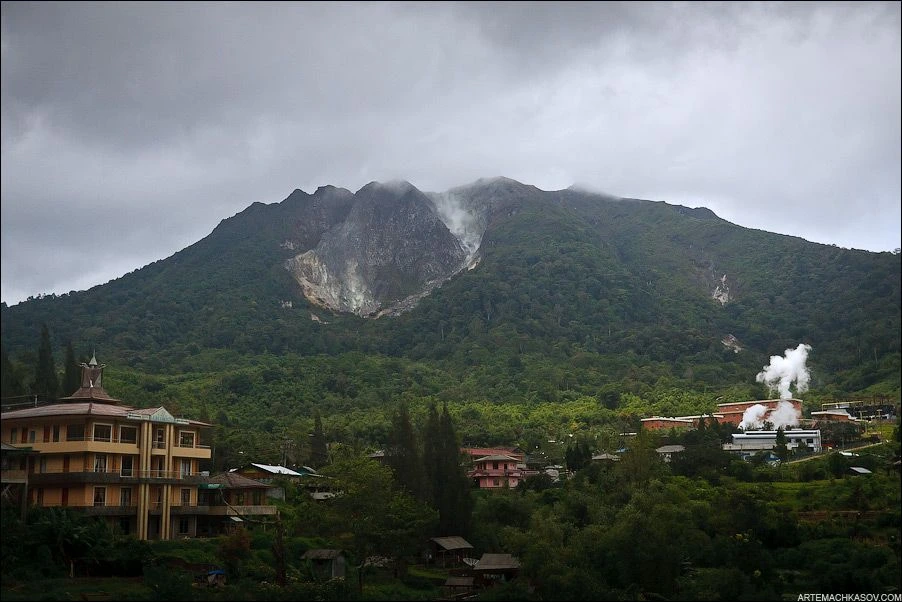
The landscape on the way into town is barely signs of civilization.
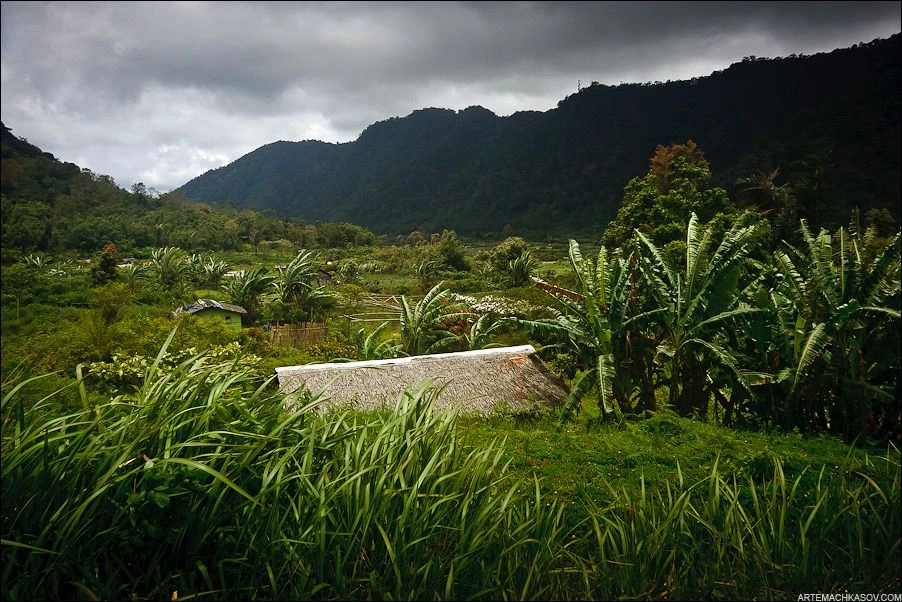
But if you look closely, there is and power lines, and satellite TV.
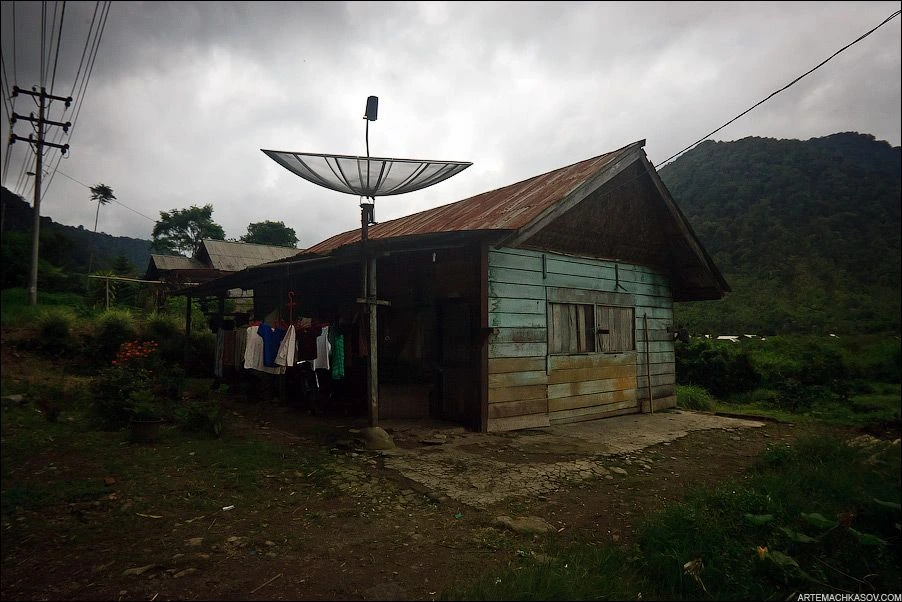
Soon we caught the bus and went to the famous local market, the existence of which, however, is unknown to most tourists who were in Berastagi.

